Rijeka 2020 Opening Party: Bold, Controversial, Brilliant - a Foreign Resident's View
February 3, 2020 - The Rijeka 2020 opening party was quite a show on so many levels. A detailed look at an unforgettable 24 hours in the Port of DIversity through the eyes of a foreign resident.
Before we get started on what was an incredible 24 hours in Rijeka for the opening party as the new European Capital of Culture, let's agree on one thing - whatever I write is going to upset someone in Croatia merely because of the topic. And my appreciation of the events of Saturday are very different after living here for 17 years than the average tourist, but I think it is worth the effort to look at some of those differences.
When I first heard that Rijeka has been chosen as the capital of culture, I was excited and made a note to come to the opening night, for I knew that it would be a memorable and unique experience, given the city's liberal reputation and political leaning. Back in 2017, The Guardian penned an article, 'Red' Rijeka is ready to rock as European Capital of Culture 2020, in which they wrote:
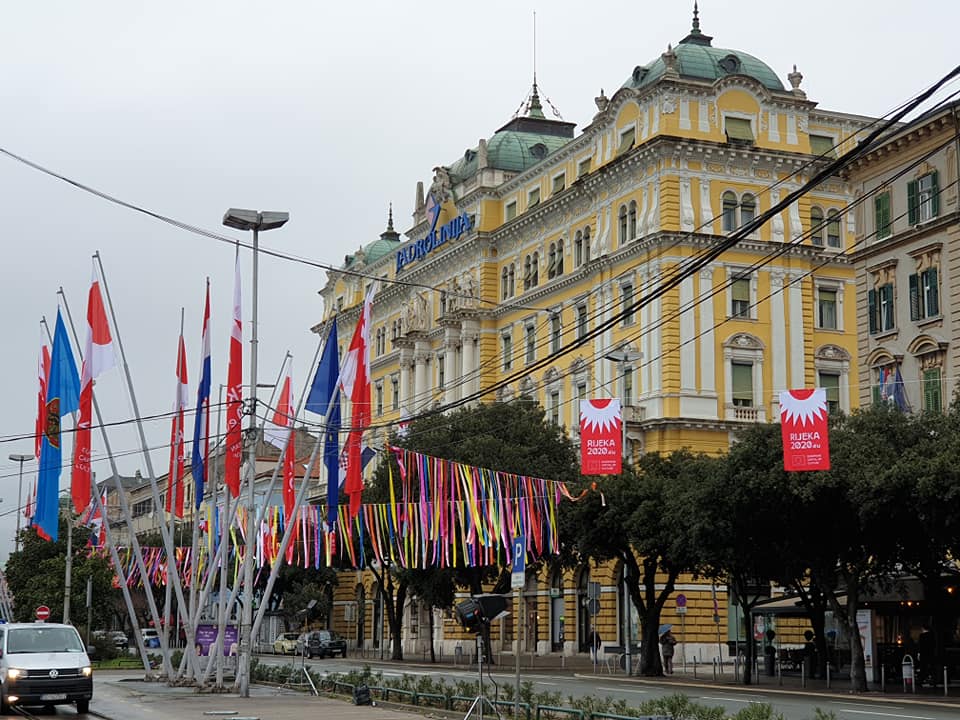
Croatia’s third-largest city is a shipbuilding port with indie attitude. Dubbed “Red Rijeka” for its left-leaning views, and “the city of music” for its pioneering punk, rock and rave sounds, this seaside citadel of 128,000 people has become “the last bastion of artistic freedom in Croatia,” according to Tea Tulić, a local author recently published in English.
Following the city’s successful bid to become European Capital of Culture 2020 (along with Galway), there’s a buzz of activity as former industrial complexes are being transformed into art spaces and new bars and restaurants spring up alongside the city’s Austro-Hungarian palaces, Venetian townhouses, baroque cathedral, Roman fortress and Tito’s concrete curios.
And then I saw the first promo video (above) when it came out - now THIS was a side of Croatia one rarely gets to see in more conservative parts of the country. The slogan Rijeka, Port of Diversity, had a great feel to it, and I was looking forward to seeing a different side of life here. When the programme came out, and there were no less than 70 events to see on the first day alone, I decided to leave early to take in as much as I could. And it only took a Facebook post at the very first venue to get the controversy started...
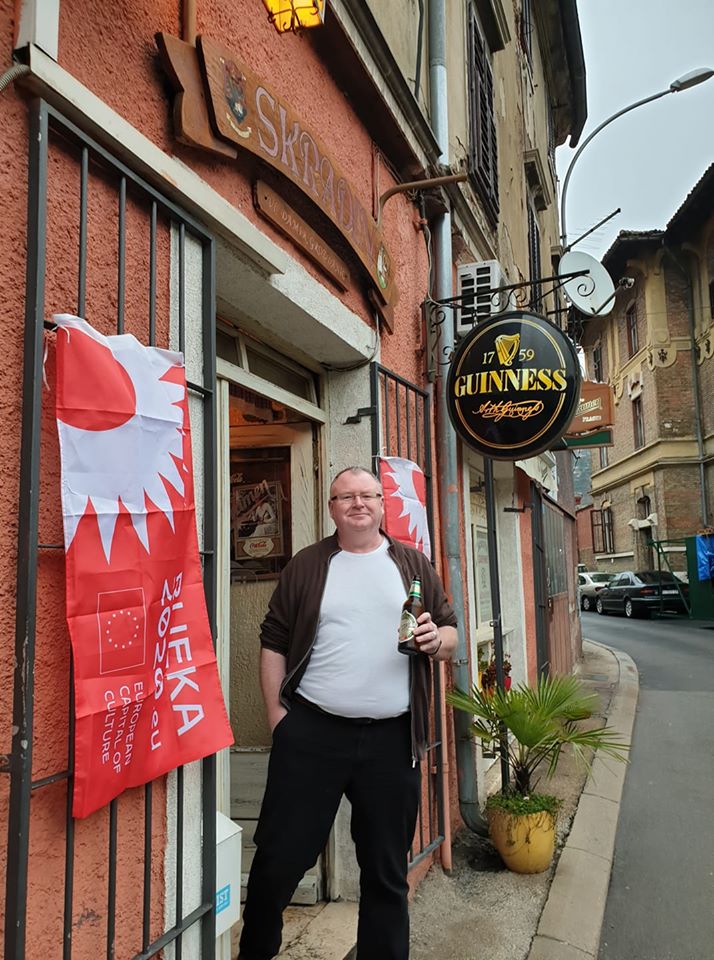
I had been advised by friends not to miss the Cafe Skradin experience, and so I was pleased to find that the first event of the day was hosted there from 7am until 1pm - socialising at Skradin and then taking the anti-tourist route on a bus tour. The programme quoted the New York Times' advice:
“To better understand the city’s groove, take a circuit along the river and former industrial zone (…) Start with a cold Nikšićko beer at Cafe Bar Skradin – a family-owned drinking hole, filled with memorabilia, including old radios and maps, since 1964.”
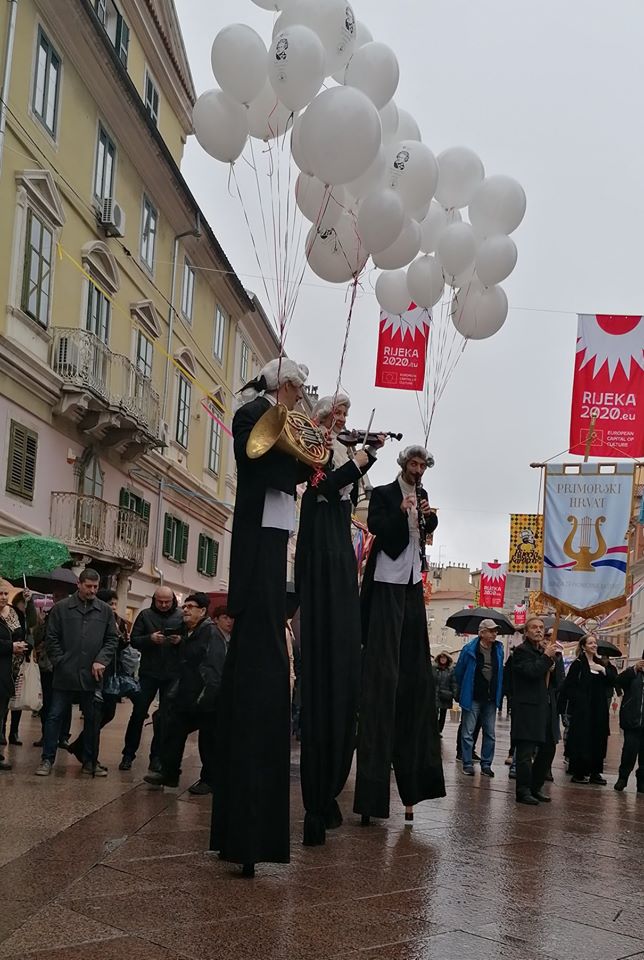
Excellent advice which I followed to the letter. I don't always agree with the New York Times, but this advice was spot on. It was just that I knew that as soon as I posted the photo above on Facebook, the attacks would start. And so it proved.
For while Niksicko is an excellent beer - and I know few who will disagree on that score, and it certainly knocks the socks off Zuja - it is a beer not from Croatia, but from neighbouring Montenegro, as several people were keen to point out within seconds of me posting. A lesson for the New York Times - diversity is ok up to a point...
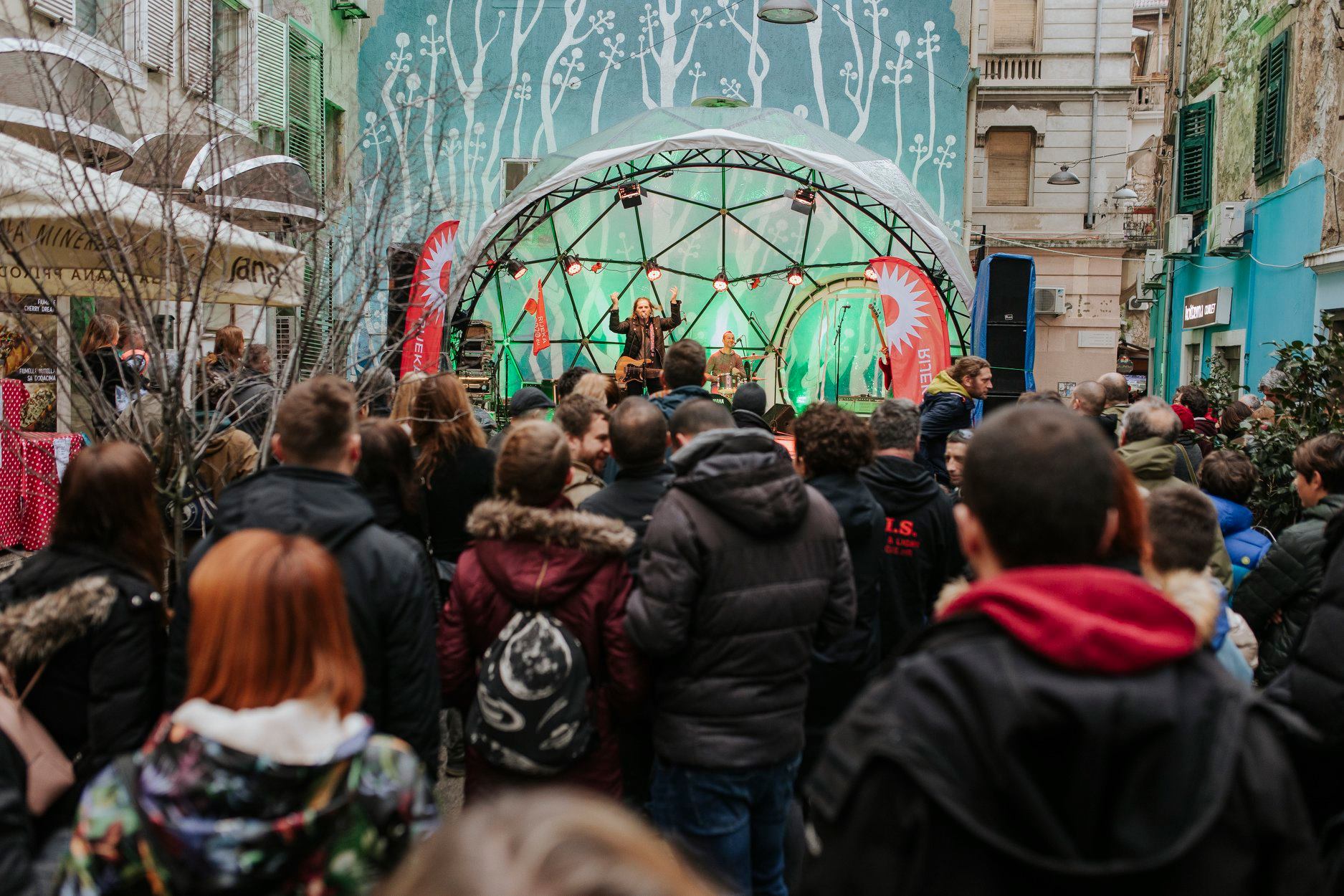
I don't want to get into the politics of the portrayal of Croatia's recent Yugoslav past here, because we will get bogged down in it, and I want to focus on a city which truly came to life despite the rain. But I do think it is important to cover the topic from both political standpoints, so that our readers can see the arguments of both sides and so draw their own conclusions.
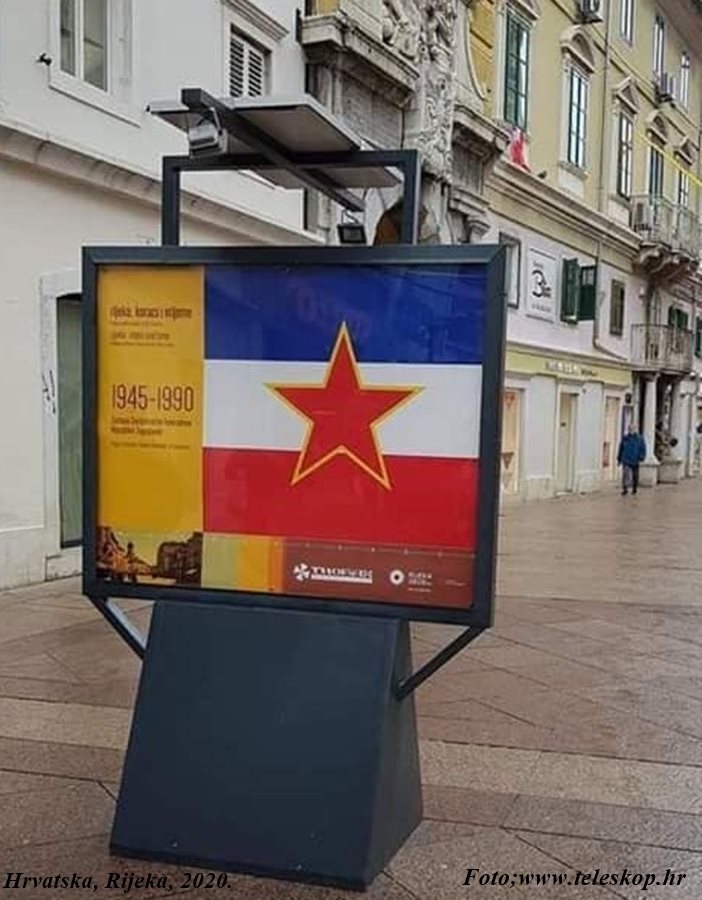
(Photo credit www.teleskop.hr)
An exhibition on Korzo of the 7 different countries that Rijeka was part of in the last 100 years caught the attention all over Croatia, particularly this poster covering the period of Yugoslavia under Tito, and Split writer Miki Bratanic was among those who voiced his objections.
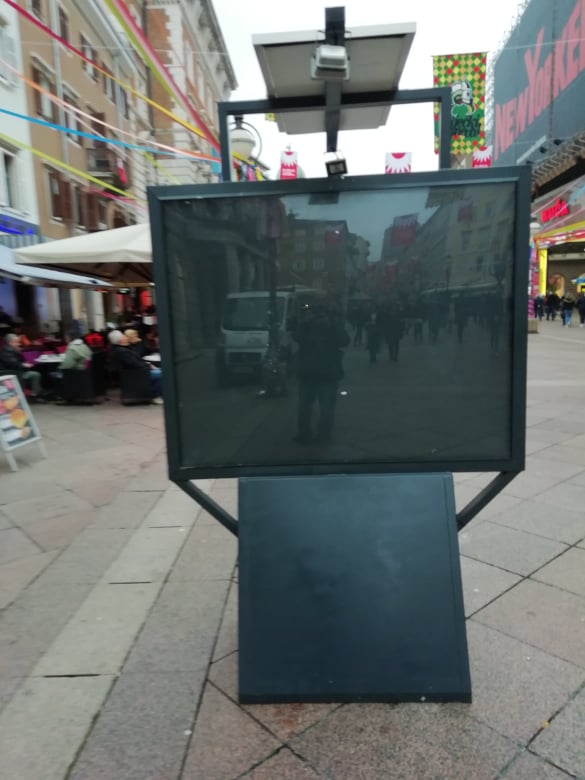
When we went back to video all seven posters to put it into context this morning, the entire exhibition had been removed. Rather than me getting into the issues behind all this (as I really do want to get on and talk about the buzz all over the city), I have asked Miki to write a piece on why he was so offended, and I will also ask someone from Rijeka 2020 to present the counter side of the argument. I will post both on TCN and let readers draw their own conclusions. Which is about as fair as I think I can be, while also allowing me to move forward with the rest of what I want to talk about.
We are almost done with politics... but not quite.
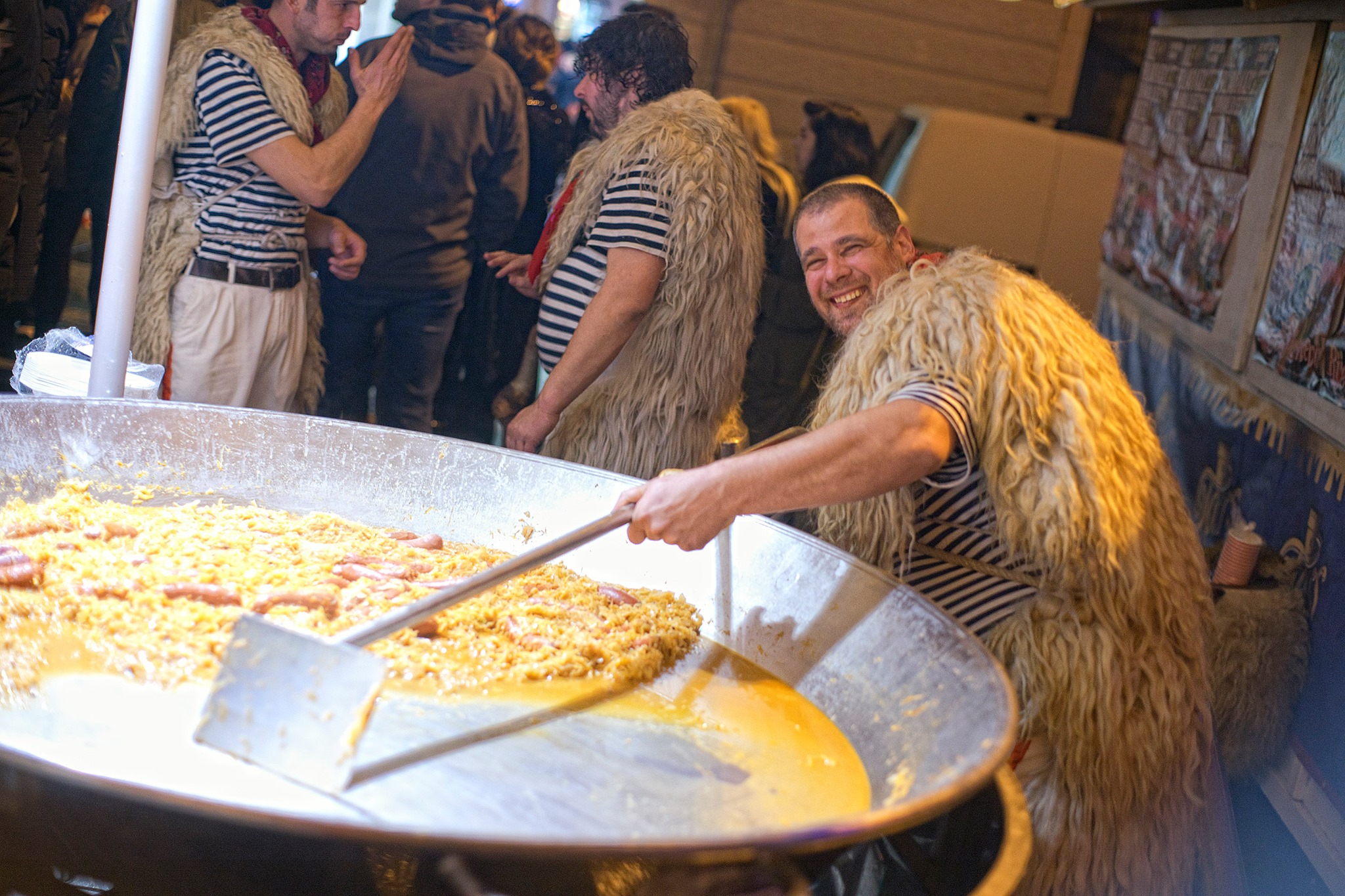
Rijeka is the first Croatian city to hold the title of European Capital of Culture. it is an event which has been known about for quite a while, an important one to showcase the country to European partners, and one which one would expect some senior political attendees. Especially at a time when Croatia is hosting the EU Presidency.
There was a no show from the Prime Minister.
There was a no show from the President.
There was a no show from the Speaker of Parliament.
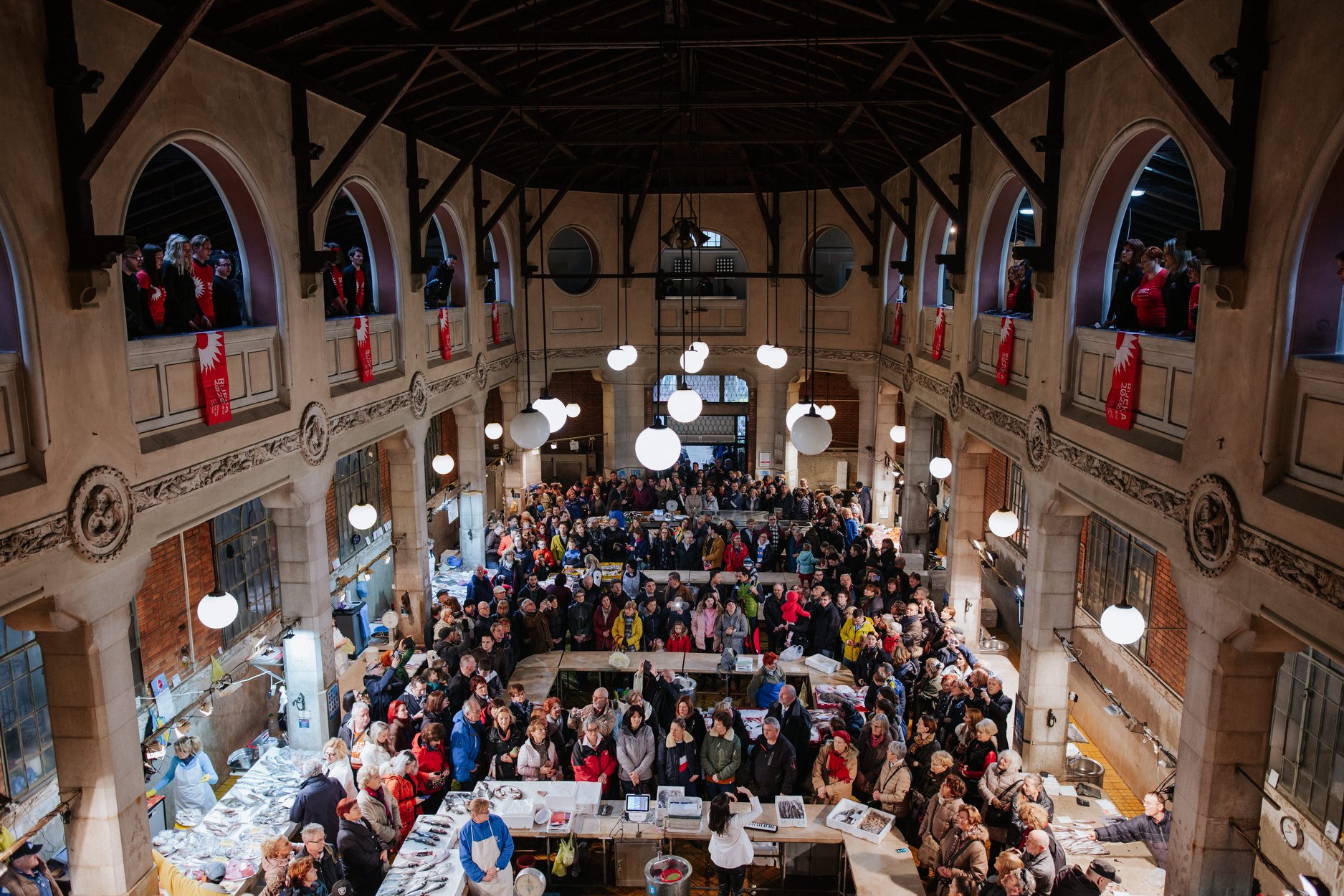
The absence of outgoing President Kolinda Grabar-Kitarovic was particularly interesting to me. A Rijeka native, she has spent the last five years grabbing any photo opportunity possible, and yet in what was one of the most high-profile events to represent her country as her presidency comes to an end, she was nowhere to be seen. Perhaps an aversion of the colour of 'Red' Rijeka played a part.
One senior official who did show up was Dubravka Suica, the EU Vice Commissioner for Democracy and Demography. A former English teacher, Suica was ridiculed in the Croatian media for her English before assuming the post. Nobody attending Rijeka 2020 had the chance to judge for themselves, as she chose to speak in Croatian only at this most international event, which was a little disappointing.
But the show went on. And what a show it was.
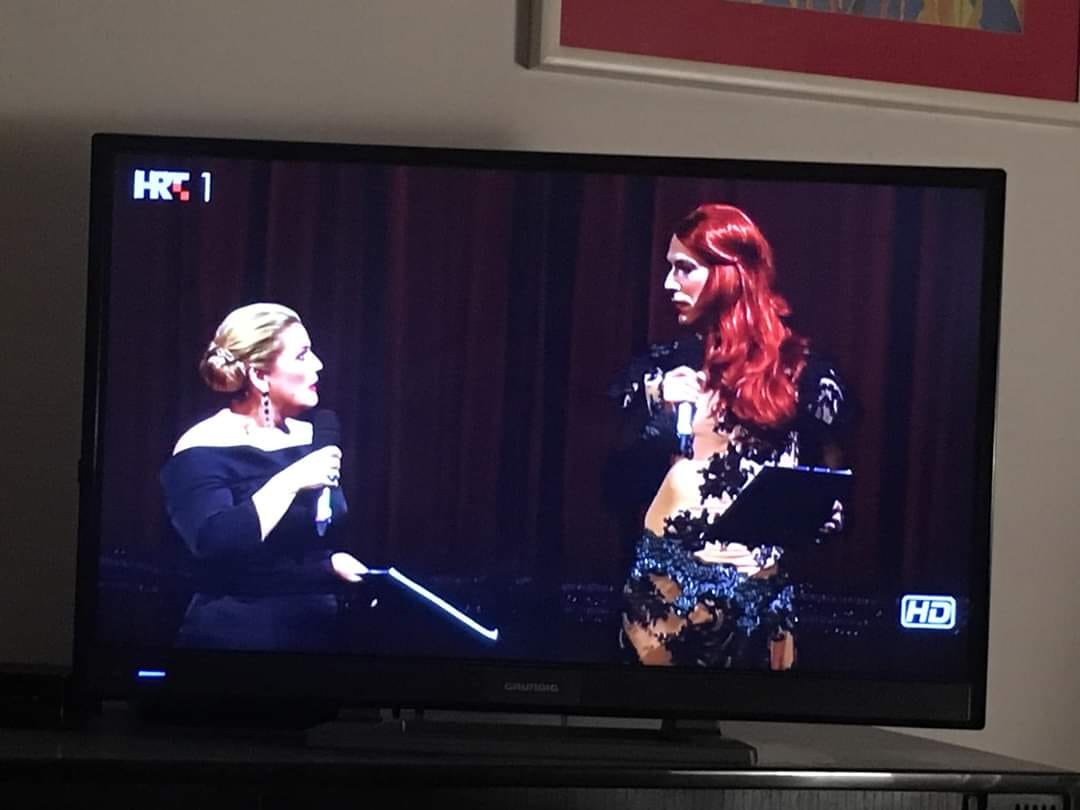
As a symbol of the diversity that Rijeka 2020 was striving to show, the choice of presenter at the opening event was genius. Actor Edi Celic appearing in drag may not have been to every conservative's liking, but to send a message of tolerance and acceptance to the wider world, it was inspired. Although things have improved considerably since then, it is only a decade since there was violence at Split Pride, for example.
And that feeling of acceptance, tolerance and freedom was EVERYWHERE in the city on Saturday. The rain could not dampen the spirits of the locals who had come out in force to celebrate this special moment in their city's history. As the day descended into night and I discovered gem after gem in hidden corners of Rijeka, I finally managed to pinpoint what was so different about this Rijeka experience - for the first time since arriving in Croatia back in 2002, I felt that I was in a liberal mainstream European city.
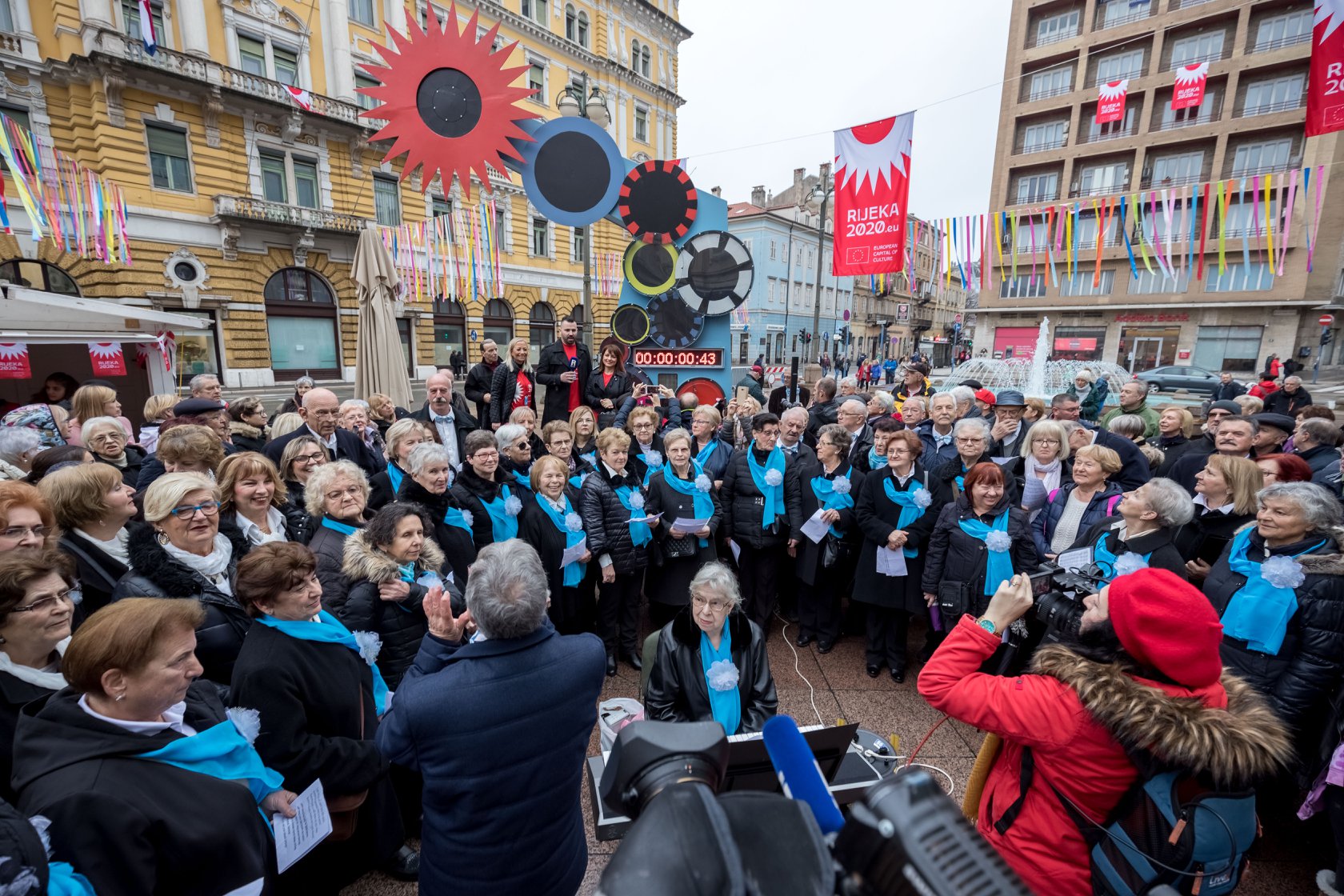
That is not to say that this is better than a normal Croatian city experience. It isn't. It is just different, and something which I personally really liked. And so too will others - not everyone. But the Port of Diversity was offering a totally different Croatian experience which will appeal to some. And that is a good thing.
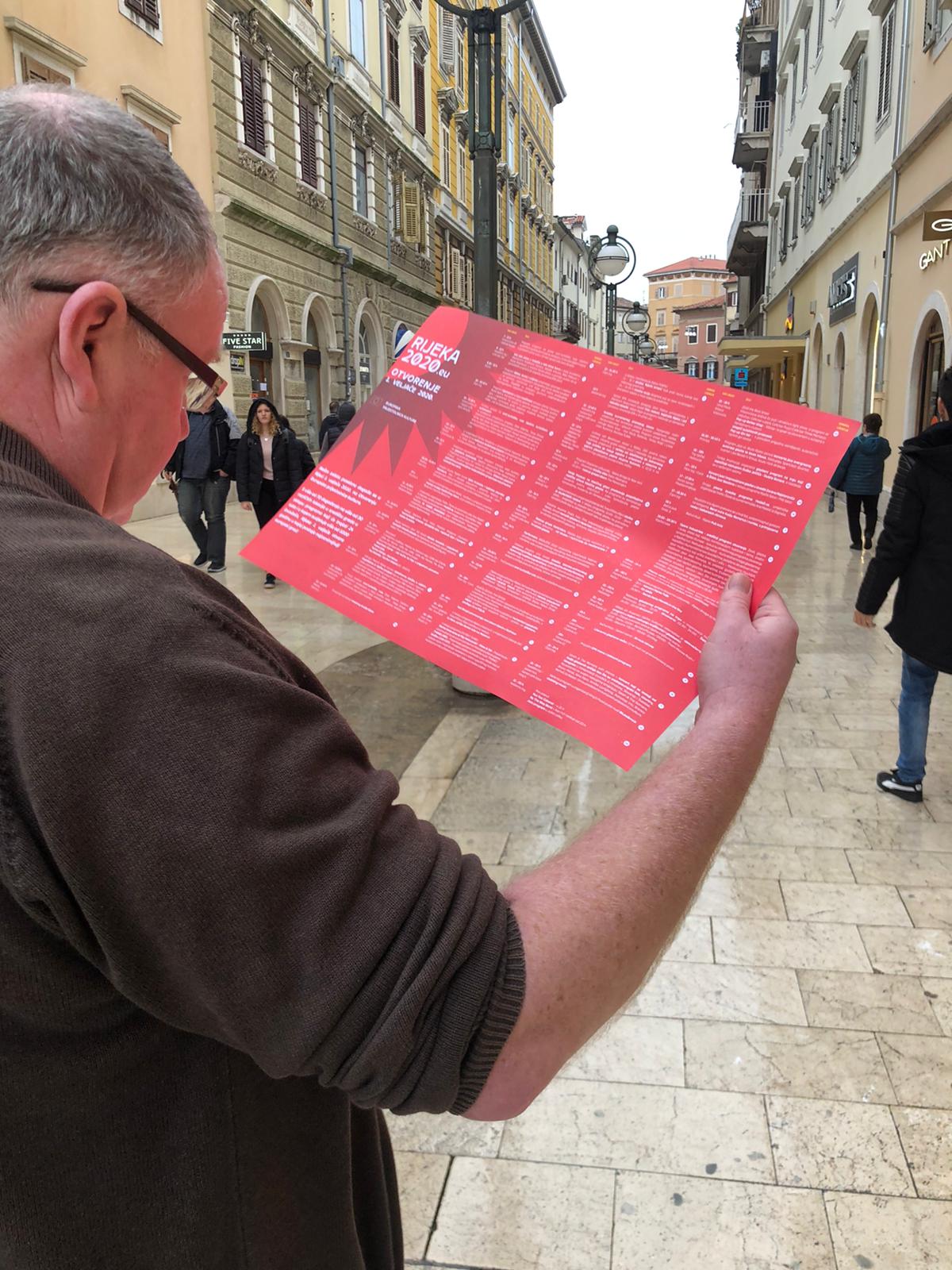
I had heard mixed stories about the preparations of Rijeka 2020, but my experience on the day was overwhelmingly positive. A very useful guide to all the day's events - in English or Croatian and complete with useful map - was being widely distributed, and the numerous information points were staffed with enthusiastic and helpful staff.
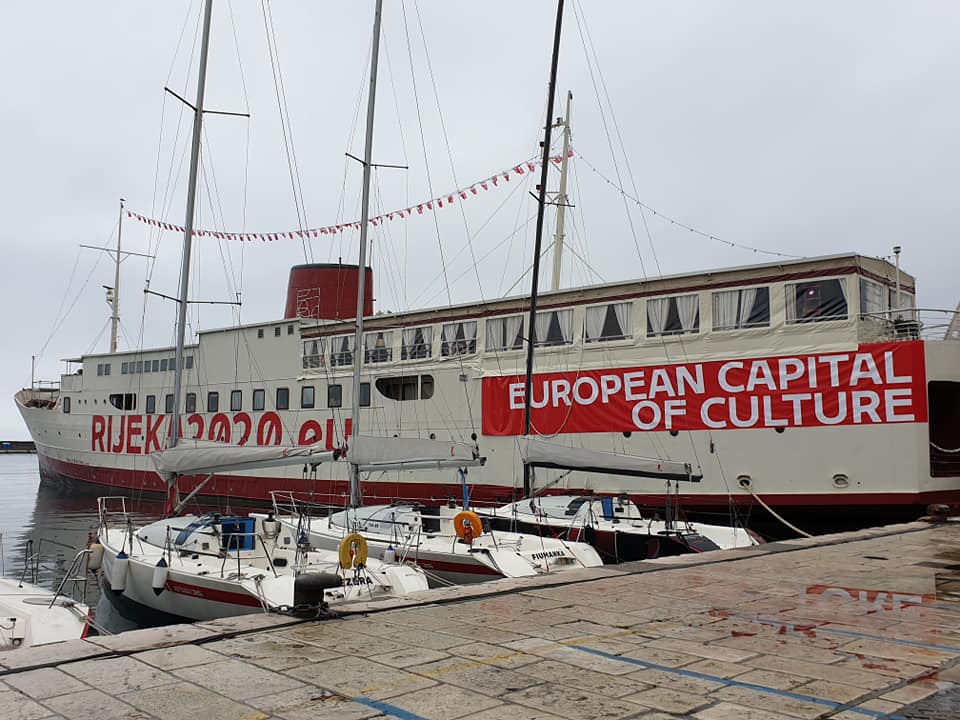
A word too on the facilities laid on for the media. There were 65 media outlets in all, from 14 different countries, and the media centre was housed on Rijeka's famous Botel, right next to the location of the evening's main event, Opera Industriale, a spectacular look at the industrial history of the city over the last century. Media facilities often leave something to be desired, but the Rijeka 2020 team put on one of the best shows I have come across working for TCN, and the complimentary food and drinks, combined with excellent service, great WiFi and outstanding views of the main action, were much appreciated. A lesson in how to treat the media.
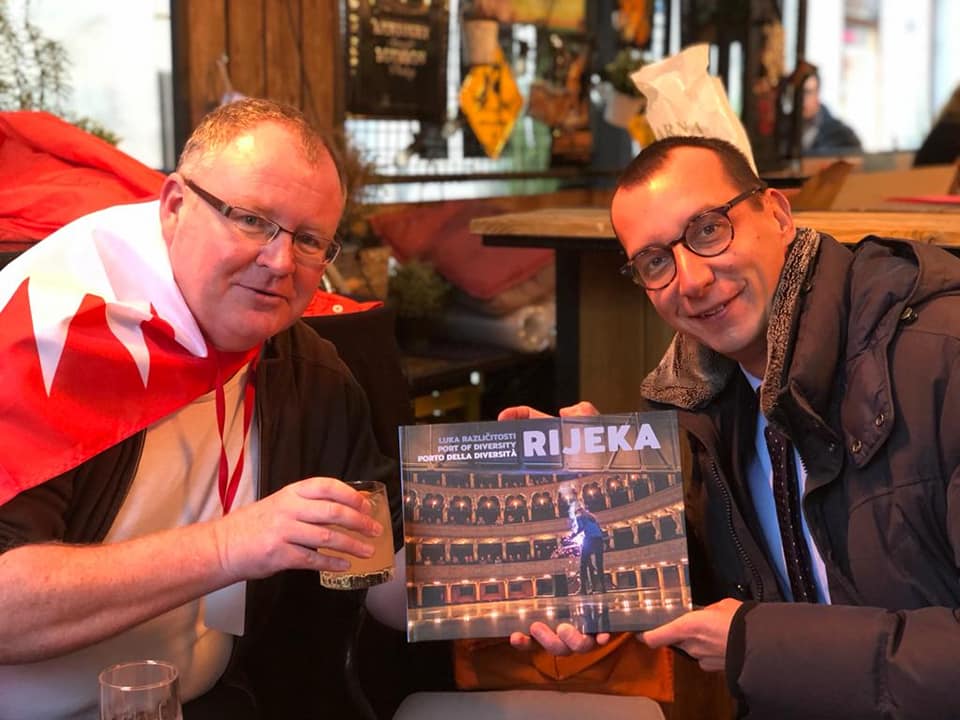
I was grateful to Deputy Mayor Marko Filipovic for finding time in his schedule on such a busy day to talk a little about the year ahead, and Marko was kind enough to say a few words on camera, which you can see below (he can be heard despite the lively atmosphere at the Three Monkeys cocktail bar).
In many ways, this was my favourite part of the day and the moment where I saw the Port of Diversity at its most diverse.
The city was full of interesting characters from all walks of life, several of whom sat down at the table and joined us for a while. A Venezuelan living in Varazdin, a Nigerian on Krk and this fat Englishman provided some of the foreign contingent, but it was the diversity of the locals that made for the most fun. I even discovered that the director of a protective clothing factory is my wife's second cousin.
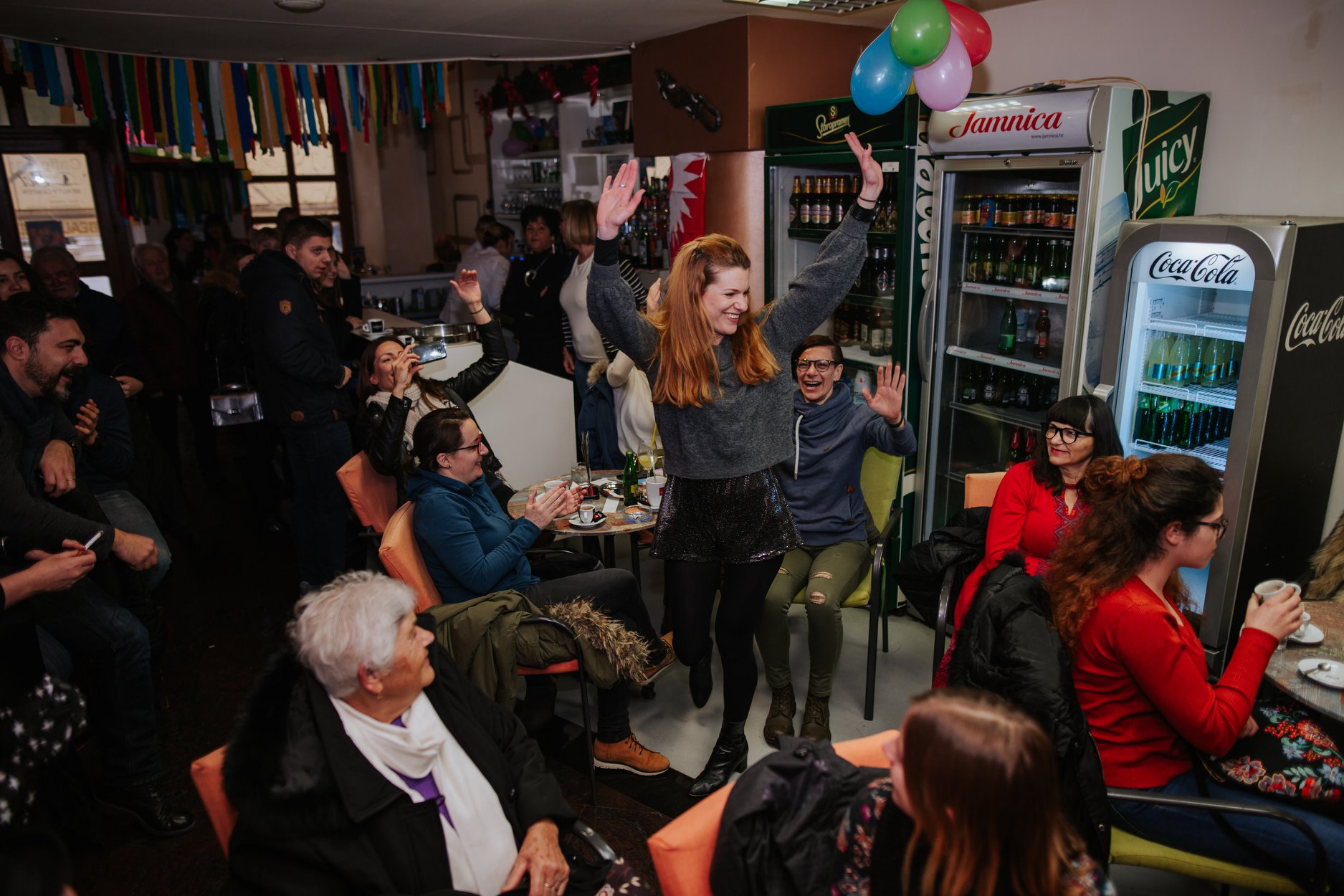
There was a constant stream of happy people of all ages, wandering the streets and taking in the events and installations. Croatia, Full of Life - this was it, and out of season. A little like Advent in Zagreb and HeadOnEast in Osijek, Croatia can put on quite a show outside the summer months.
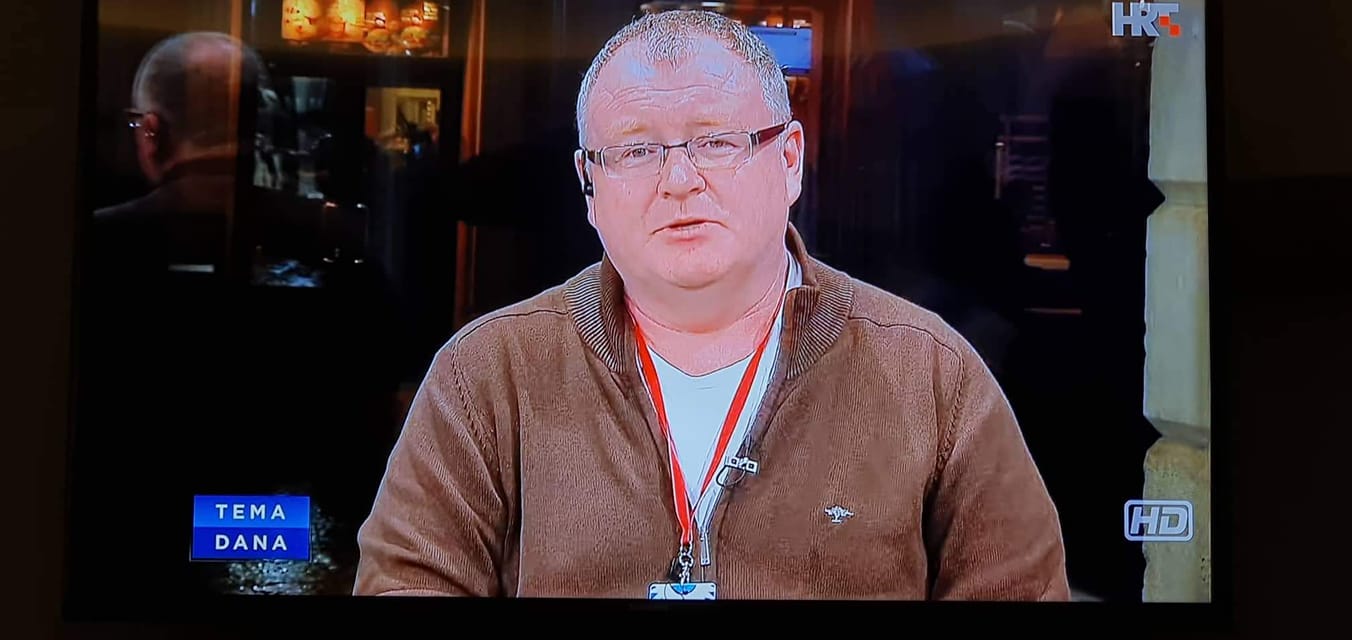
I sadly missed the main event live, as HRT called me requesting I appear live on the air during the opera to talk about Brexit. And if I didn't think I had a bald patch previously, now that it was featured on national television, there can be no doubt... You can see the finale below.
Day turned to night, and Rijeka was just warming up. My guide for the night was Martin, a Brit who has been living in Rijeka for years, and who I last met way back in 2010. He suggested we meet at one of the many concerts taking part over the town, and so I headed to the square he suggested, passing streams of contented people enjoying their own chosen shows.
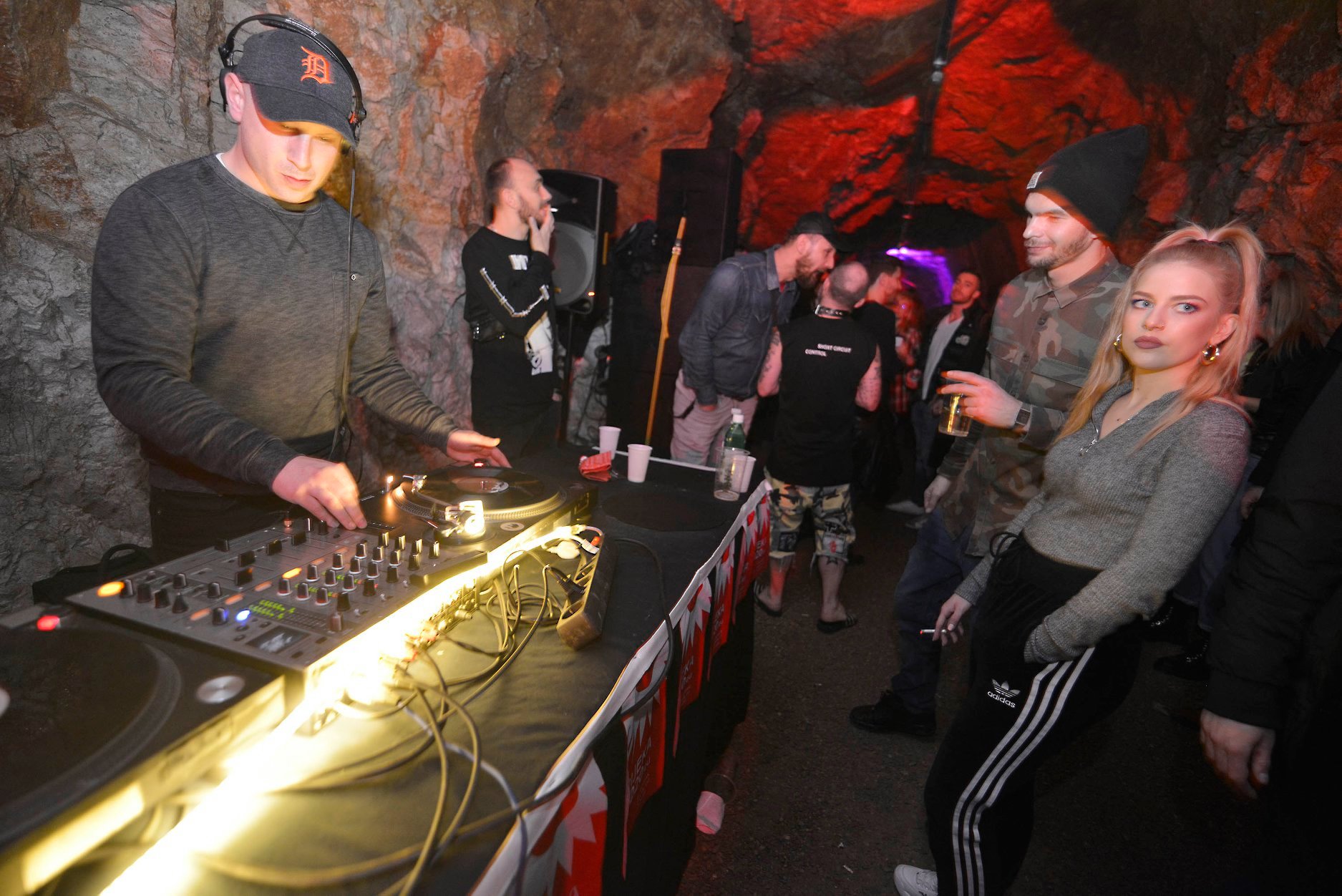
Getting the local perspective from Martin and the dozens of people I met through him through wanted turned into a very long night was a huge bonus. He filled me in on the diverse local music scene, the opening of various public spaces that had been closed for years, and some of the permanent community programmes which will be a legacy long after Rijeka 2020 has finished.
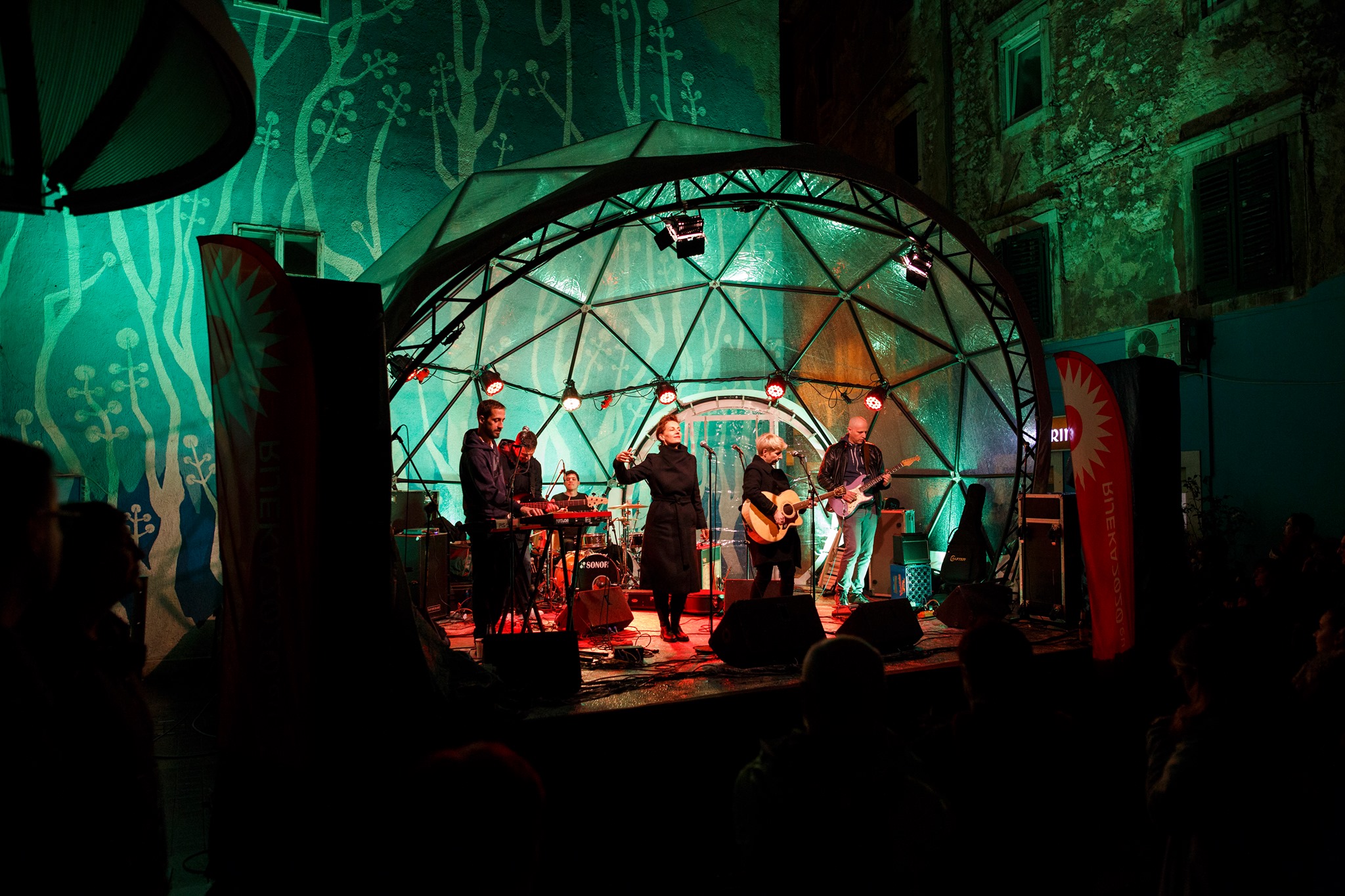
I was particularly interested in the Participatory Programmes of Civil Initiatives and the Green Wave. an initiative to encourage active involvement of citizens in shaping the socio-cultural scene, with a range of participatory programmes to improve the living conditions of local residents. As an example, he told me of a 30m2 space by his apartment which will be turned into a garden with pergola, a small oasis of calm, and one which he has been invited to help take care of. Many similar things will be taking place all over the city to make those small, but important, differences.
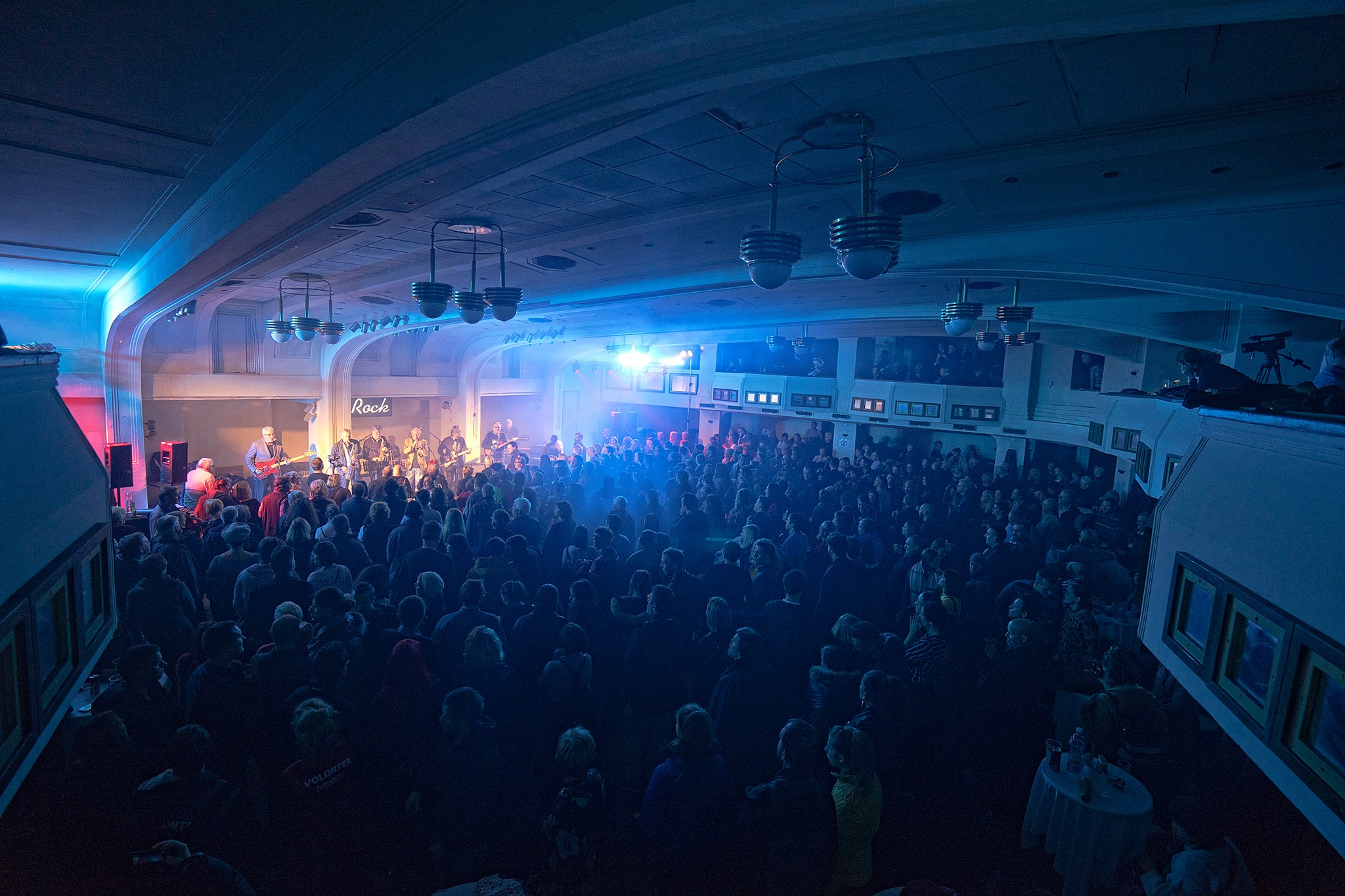
As one concert ended and the bar ran out of beer (the city was PACKED), I followed Martin and his local knowledge to a little underground place called Opera, Teatro Fenice, in the basement of some cinema. It was one of the spaces which had been closed for years but which was now once again brought to life. And what a gorgeous little venue it was (see above), keeping us very entertained with at least ten bands playing shorts sets until 3am.
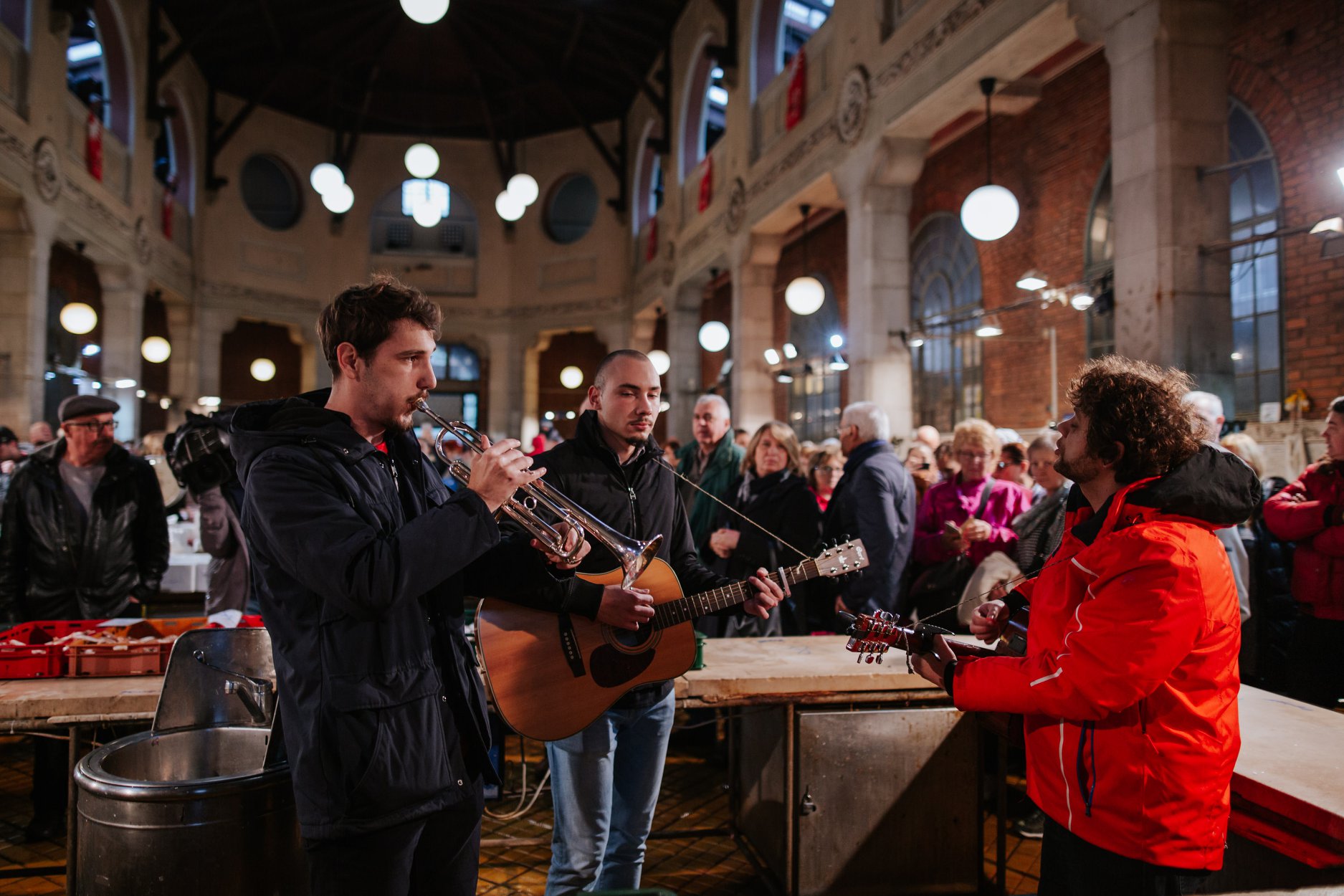
But Martin was not finished, and we went for a night cap at a little place he knew that would be open until at least 6am - Klub Zivot. And there we were, having to queue up outside until there was enough space to accommodate us. A couple more beers and yet one more concert, until we finally called it a night shortly before 6am. As my colleagues were meeting me in a couple of hours, it seemed sensible to sleep in the car, something I haven't done for years.
But if felt about right, for this night in Rijeka had knocked years off me, although I will confess to a very early night on Sunday.
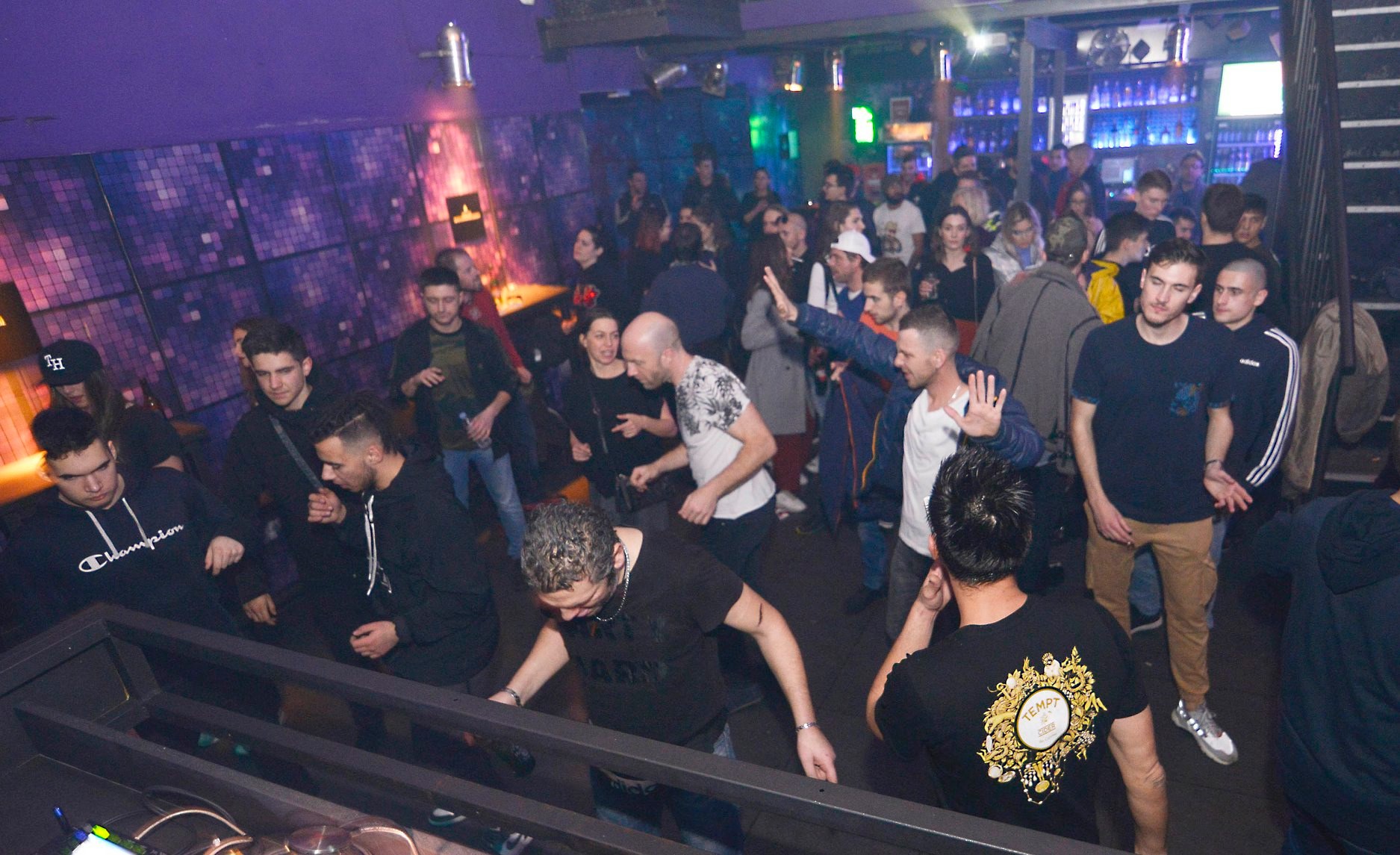
The Rijeka experience is not for everyone, but as a Port of Diversity, the city has the perfect slogan. It is one more arrow to the bow of Croatia's tourism diversity, and one which will appeal to a younger generation, and its time as the European Capital of Culture is an outstanding opportunity for it to develop the Kvarner region. Rjieka Airport on Krk is very underutilised, the region's medical and wellness tourism potential is outstanding, and it lies right next to Istria.
Leaving the politics aside, a huge thumbs up for this fantastic addition to the 2020 calendar, and I for one look forward to my next visit.
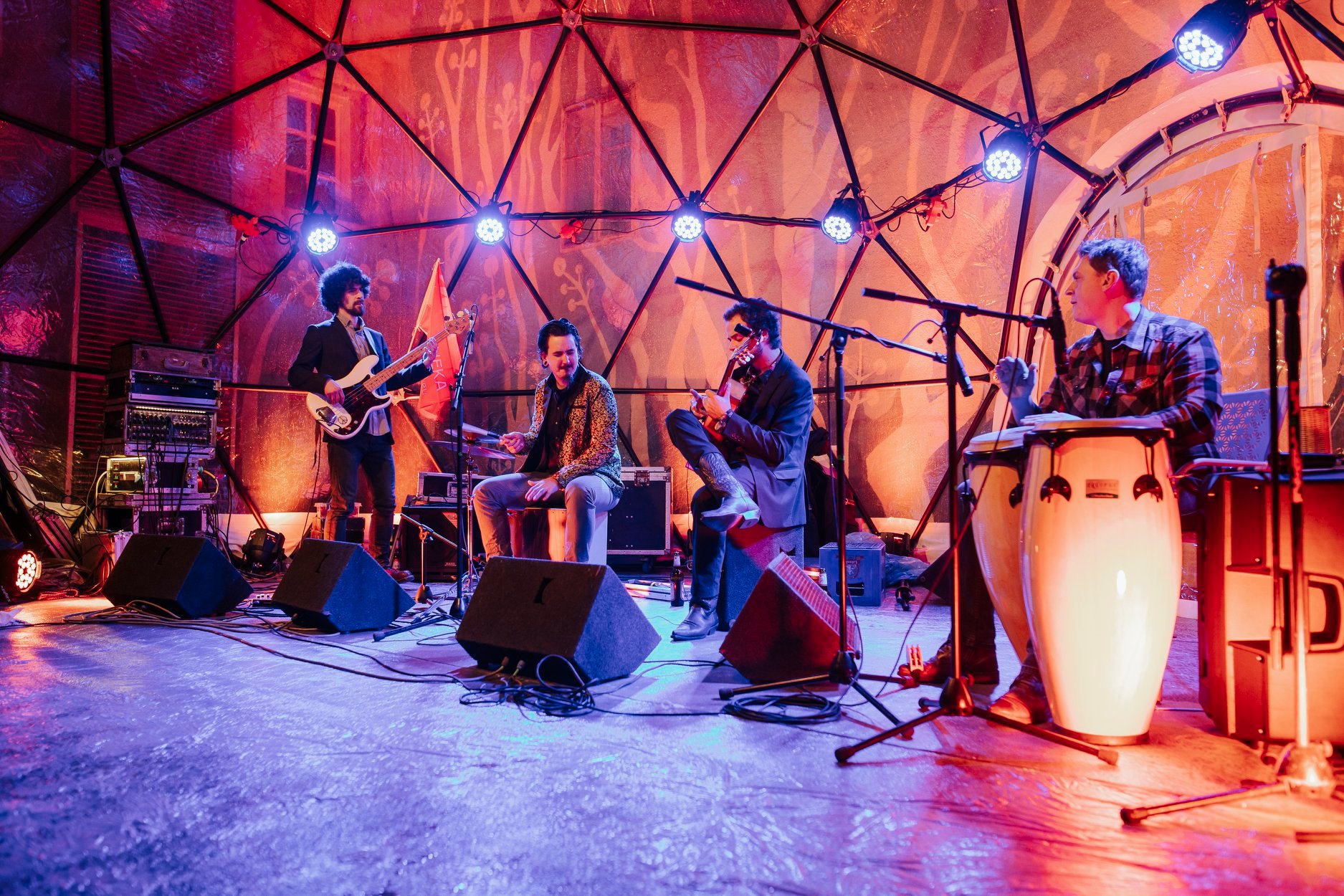
You can learn more about Rijeka 2020 from the official website.
To see the opening ceremony and opera in full, check out the video below.
Read more about Rijeka and why some people think it is the best place to live in Croatia.
24 Hours That Changed Rijeka
February 2, 2020 - A large-scale opening program that took place on February 1, 2020, and lasted for 24 hours, marked a date on which the city of Rijeka officially took over the title of the European Capital of Culture, as well as the actual start of perhaps the most important, and certainly the most interesting cultural year in the city’s history.
From the early morning hours, the entire city was a single body, beating to the same beat. Opera Industriale marked the culmination of the evening in which Rijeka announced the values by which it will present itself to Europe, along with the as values it will convey to Europe.
The all-day programme in Rijeka was attended by more than 30,000 people, of which 20,000 gathered on the piers and breakwater in Rijeka Port to watch the central programme, titled Opera Industriale. Freedom, Tolerance, Antifascism, and Love are but some of the messages that rounded up the central opening event.

Petar Fabijan
Following Opera Industriale, the other programmes continued to the morning hours, in numerous clubs, cafes and concert venues.
After yesterday, nothing will ever be the same as before. This was a day in which Rijeka clearly demonstrated why it became the European Capital of Culture.
To read more about lifestyle in Croatia, follow TCN's dedicated page.
Opera Industriale Transforms Rijeka Port for European Capital of Culture Year
February 2, 2020 - Tens of thousands of people attended the central EcoC opening programme that communicated the courageous messages on the values upon which modern Europe is founded. On Saturday evening, the uncommon Opera Industriale transformed Rijeka Port into a huge stage, where there were thousands of performers accompanied by the sounds of work, industry and noise.
The Opera Industriale’s final song “O Bella Ciao” symbolically reminded Europe and Croatia of the freedom which the citizens of Europe have been enjoying for the last 75 years with words “È questo il fiore del partigiano, morto per la libertà! / This is a flower for the partisan, who died for the liberty”. Messages appearing on light installations were: RIJEKA LET'S GO; FORZA FIUME; PORT OF DIVERSITY; TOLERANCE; RESPECT; COEXISTENCE; PEACE, ANTIFASCISM; ART; EUROPE, CULTURE
“Through the programme in the port, in front of the eyes of Europe, Rijeka paid respect to its workers and its industrial heritage, its avant-garde art and the tradition of its surrounding region, at the same time reminding us of the core values the modern Europe was built on. Rijeka Port was chosen as the symbol of modern and open Rijeka, for which reason the motto of European Capital of Culture Rijeka is Port of Diversity. The uniqueness of this program was ensured by the huge audience which rang the cowbells, cheered, created noise and lights, and thus participated in performance both as a living instrument and as the very reason for the existence and realization of the European Capital of Culture,“ said Emina Višnić, Rijeka 2020 CEO immediately after the ending of Opera Industriale.
Opera Industriale is based on the musical framework designed by Rijeka art duo JMZM (Josip Maršić and Zoran Medved) and orchestrated by Croatian composer, maestro Frano Đurović. Besides them, this central opening programme in Rijeka Port featured numerous artists, including DB Indoš – House of Extreme Musical Theatre with Rumoristi, the mixed Choir of The Opening of European Capital of Culture which was lead by Jeka Primorja choir and fronted by Igor Vlajnić, and string and wind orchestra. The Finish Choir Mieskuoro Huutajat offered an especially attractive performance that included screaming, shouting and rattling. Opera Industriale also featured around twenty Rijeka guitarists, ten drummers, dancers and the workers’ orchestra of grinders, welders and sparks.
This urban Rijeka opera has brought forth a reminder of the rich and stormy Rijeka past, along with the messages of respect for the power of workers in the life of a modern city, the working people who proudly built Rijeka. In regard to the tackled themes, this performance also included a reference to Janko Polić Kamov, the greatest Rijeka writer and a predecessor of the European avant-garde, whose verses were recited in a very peculiar style. A Finnish choir of screaming men sang the hymns of all the states in which Rijeka existed during the past hundred years. During Opera’s grand finale, the famous song of Italian antifascists “O Bella Ciao” was jointly sang by all the performers: rock guitarists, drummers, The Choir of The ECoC Opening, orchestra, Finnish Choir Huutajat and DB Indoš along with a large part of audience. Through the messages that pervaded this programme, Rijeka clearly demonstrated the values it cultivates and represents, the messages it wishes to send to both Europe and the world. Programme’s narrator was Zoran Prodanović Prlja, a well known Croatian rock frontman. The spectacle was rounded with spectacular fireworks.
Rijeka has been having fun from the early mourning hours
Following Opera Industriale, entertainment and fun will continue to the early morning hours, in Rijeka’s cafes and clubs, its streets and squares.
Welcome to Rijeka, the European Capital of Culture, one of the most interesting European cities this year.
This is a message from Rijeka!
To read more about lifestyle in Croatia, follow TCN's dedicated page.
Rijeka 2020: Largest Culture Party in Europe Begins!
February 1, 2020 - The Rijeka 2020 morning programme kicked off the city's European Capital of Culture events.
From the early morning hours, the streets of Rijeka have been in a festive and joyful mood, marking the start of the all-day culture party that includes more than 70 events at over 30 different locations. The event’s organization includes more than 40 different associations, entrepreneurs, artists’ organizations and numerous individuals. Today, Rijeka enters the year in which it will be the European Capital of Culture.
“We are proud that today Rijeka officially becomes the European Capital of Culture. All the citizens of Rijeka, regardless of age, along with the esteemed guests of Rijeka, will get a chance to enjoy truly varied cultural entertainment. While the morning hours have been dominated by dance, theatrical and musical performances along with performances by children’s choirs, vocal groups and dancers, the evening will be crowned by a central event that is going to take place at 7.30 p.m. under the title Opera Industriale. We are inviting all the citizens of Rijeka to come to the port, where they will also be able to participate in the programme“, said Emina Višnić, the CEO of Rijeka 2020.
Among the numerous programmes, one sold out days ago. This is the Anti-tourist Tour, a guided bus tour that is hosted by Rijeka actresses Tanja Smoje and Jelena Lopatić. Mayor of Rijeka Vojko Obersnel joined the passengers on the first tour that took place at 10 a.m. This hilariously intoned tour offers quite a unique view of Rijeka, that is also self-ironical and typical for Rijeka.
While some begun their morning with the Anti-tourist ride, the other joined a programme titled Rijeka, Steps and Time that took place in Rijeka’s main street of Korzo, where people walked through 116 years of Rijeka history, with the assistance of 232 meters long timeline. The magnificent building of Rijeka Fish Market found its place in the programme, as during the morning hours, it hosted a gig by Vocal Studio Rijeka.
A rich musical morning in Rijeka gathered all the generations. The pupils of Elementary School Vežica performed children’s songs, nursery rhymes and lullabies in many European languages, thus showing how . childhood in Port of Diversity looks. Mixed Choir of Rijeka Pensioners performed for passers-by in Kružna Street, under the lead of maestros Vinko Badjuk and Damir Badurina. The all-day plethora of evens was joined by The Association of Restaurants and Caterers of Primorsko-goranska County, which organized a programme in numerous cafes and squares in the centre, with musical performances, cocktails mixing spectacles and big-time entertainment.
The program continues throughout the day and night
It is expected that the audience that will follow the central programme of the opening of European Capital of Culture will start gathering from 7 p.m. in the Rijeka Port. Opera Industriale, beginning at 7.30 p.m., is based on the musical template of the Rijeka art duo JMZM – Josip Maršić i Zoran Medved, and on the orchestration of the Croatian composer Frano Đurović. The programme will bring the noise, city sounds, sounds of workers, sparks and light effects. It will be performed by more than 200 performers and involve a large part of the audience. The director of the central opening programme is Dalibor Matanić.
The space for the audience visiting Rijeka Port stretches to all piers in the port – Adamić Pier, De Franchesci Pier, Karolina Riječka Pier, Boduli Waterfront, and Molo longo. Those who want to participate in the performance should come to Molo longo, especially children with their parents, high school students and university students. They should arrive there already between 6 and 6.30 p.m. due to the limited capacity for the audience on Molo longo. On Molo longo, the audience will receive cowbells they will use to participate in defined moments during the performance. One part of Adamić Pier has been turned into a space where people with disabilities will be able to follow the program in a pleasant way. In order to avoid jams, it is highly recommended for them to arrive at the Port between 6 and 6.30 p.m.
Happiness, positive energy and party in Rijeka will last throughout the day. In the afternoon, there will be rock, pop, jazz and blues concerts, as well as DJ sets. The only break and rest will be during the one-hour Opera Industriale. Starting from 9 p.m. in the clubs and in the open, there will be performances of many bands - from Jonathan, Paraf, Fit, Denis&Denis, The Siids, Associations of Rijeka rockers from the 1960s and 1970s, and also Marko Tolja, Dule Bonaca, Šajeta and many others.
All programmes that will be running in Rijeka throughout the day are completely free for all visitors, and especially for this occasion, working hours of all bars, restaurants and clubs have been extended.
It is an excellent introduction into the programme of the European Capital of Culture 2020, which will feature more than 600 individual events. Over 300 organisations from Croatia and 40 European countries and the rest of the world have been involved in the organisation.
This opening program is all but a classical-style event. The essence of performance can be summed up as sound, music, and noise, along with the combined effects of light and darkness. By using strong symbols in the actual performance, Rijeka will pay homage to its workers who worked in port, shipyards, factories, who came here over the course of many centuries, who built this city. In this manner, workers have also built the city identity, which has then been recorded by the artists. Hence, this opening ceremony is also an ode to Rijeka's artistic avant-garde and the traditions of the adjacent region. And, last but not least, Opera Industriale will remind us of all the founding social values upon which modern Europe was built.
PROGRAM
19:30
- SHIP SIREN MARKS THE START; TURNING OFF THE LIGHTS; MAIN STAGE: ORCHESTRA; . LIGHT INSTALLATIONS: PIXEL ART + MIGRANT WAVES + SEAGULL – START; DANCERS BEGIN DANCING; A BOAT WITH NARRATOR BEGINS SAILING THROUGH THE PORT IN DIRECTION OF FRANCESCHI PIER
The narrator is Zoran Prodanović Prlja, a singer of Rijeka's rock group Let 3, a band with a unique image and extraordinary texts as well as performances marked by specific humour and a feeling for the bizarre.
The orchestra consists of string and brass sections from the Croatian National Theatre Ivan pl. Zajc. Dancers are members of Flame, a group from Rijeka, and of Ana Maletić School for Contemporary Dance from Zagreb.
Scaffolding, wagons and cranes in Rijeka Port have been transformed into art installations and came to life with movement and light. For the sake of this occasion, a range of specially formed light installations have been set up across Rijeka Port
Seagull installation turned typical port cranes into a fascinating large-scale light sculpture, which celebrates the flight of a seagull as expression of freedom. As part of stage scenography an installation named Digital was set up on De Franchesci Pier, evoking industrial-technological heritage of Rijeka. Pixel Wall is a light installation in front of the Maritime and Passengers terminal building on Molo longo. It is an unusual videowall composed of pixels. Migrant Waves installation was set up in the extension of the breakwater and reminds that the port is a place of migrations, which is one of the central topics of the European Capital of Culture. It also symbolizes waves – sea waves and sound waves.
19:34 / 04:15
NARRATOR Zoran Prodanović Prlja ONTO DE FRANCESCHI PIER, APPROACHES THE CRANE, PICKS UP A GRINDER AND BEGINS WORKING – WORKERS APPROACH AND BEGIN WORKING, CLIMBERS BEGIN CLIMBING; CRANE: THE SOUND OF GRINDERS
The sounds of work, welders, sparks, and the noise of grinders that initiate the opening ceremony convey the message about the dignity and strength of workers in the life of a modern city.
These are the symbols of labour and workers who proudly built Rijeka, and by including the sound of working in the opening ceremony, Rijeka pays tribute and respect to the working class.
Performers in Opera Industriale are dressed in worn-out and new workers’ coats in different colours, mainly different shades of blue.
19:36 / 06:30
Zoran Prodanović Prlja INVITES THE AUDIENCE LOCATED ON MOLO LONGO AND EQUIPPED WITH COWBELLS TO JOIN GRINDERS; MOLO LONGO: AUDIENCE EQUIPPED WITH COWBELLS;
The entire zone around the port basin is intended for the audience, whereby the zone on the breakwater, Molo Longo, is also the zone for those who will take part in Opera Industriale. A special place is reserved for children with parents, young people, and many others who received cowbells at the entrance to the breakwater, which they will ring several times during the performance and thus participate in the program.
19:38 / 08:00
FIREWORKS APPEAR ON THE CRANE
19:38 / 08:37
MAIN STAGE: DB INDOŠ - CHILDREN ON INSTRUMENTS – SCHACHTOPHONES
Damir Bartol Indoš is a performer and visual artist who creates experimental music instruments, sound sculptures Schachtophones and graphic partitures. Schachtophones in Opera Industriale have graphic partitures and with their help, they produce sound and bring the intensity of verses by Janko Polić Kamov, a great writer from Rijeka. Kamov lived at the turn from the 19th to the 20th century and he was a writer who transcended physical boundaries of Rijeka and Croatia, but also artistic boundaries of Europe at the time, bringing it into the new age and upheaval, announcing European literary avant-garde. In this part of the programme the following verses will be performed:
“I was enraged at the noise made by the people beneath my window and I fell asleep again only when I found out those were the horses.”
They are part of notes/aphorisms entitled Acceni, published in 1913, three years after his death, in Italian magazine Lacerba.
19:43 / 12:40
MAIN STAGE: NARRATOR + ORCHESTRA + CHOIR; CHILDREN LEAVE THE MAIN STAGE
NARRATOR Zoran Prodanović Prlja narrates historical facts about Rijeka:
1230 The first mention of the city's name: Saint Vitus' Rijeka
1599 Venice attacks Rijeka with artillery due to Rijeka's support to Uskoks
1659 Emperor Leopold issues two-headed eagle coat of arms to the city of Rijeka
1719 Rijeka was proclaimed Free Royal Port
1739 Public masquerade balls were prohibited due to the plague
1747 Rijeka was connected to Trieste and Vienna by stagecoach
1752 Sugar refinery was put into operation
1765 The first Rijeka's theatre was built
1778 Traditional bull hunting through the city streets was abolished
1813 Karolina Belinić stopped the British fleet attack at the city
The reminders of interesting and turbulent history will be mentioned in several occasions during Opera Industriale.
19:43 / 13:00
MAIN STAGE: DB INDOŠ PERFORMANCE
Damir Bartol Indoš is the author of the mentioned Schachtophones, instruments for producing sound, based on the art of noise. The instrument is started by the opening of the manhole cover. Schachtophone boxes have a network of springs inside of them. Springs are started by opening cover and putting your hand in them or entering the manhole-boxes themselves.
Schachtophonia Notes for Kamov, by the authors Damir Bartol Indoš and Tanja Vrvilo, performed by The Rumourists: DB Indoš, Tanja Vrvilo, Ivan Bilosnić, Nino Prišuta, Ratko Danilović, Damir Prica Kafka, Ivana Pedljo, Lidija Šola, Jasmin Dasović (percussionists and performers on schachtophones, two vocalists, performers of the new circus, drum, bass guitar, electric guitar and a musician playing who plays prepared piano, saxophone and piano keyboards) as well as Children schachtophone orchestra, composed of eight students from Ivana Matetića Ronjgov Music School in Rijeka, under the mentorship of prof. Anita Primorac.
In this part the artists perform Kamov’s quote:
“At the moment of death there is no more exaltation, because death is the ultimate exaltation.“
19:43 / 13:35
FOLLOWING THE RHYTHM SET BY DB INDOŠ, BOATS ENTER THE PORT; INSTALLATION SEAGULLS ARE SET IN MOTION, IN ACCORD WITH THE RHYTHM
Small boats and vessels also participate in Opera Industriale. They joined the performance together with many other groups of citizens and inhabitants of Rijeka who will have a special role in the opening ceremony.
19:48 / 18:01
MAIN STAGE: NARRATOR + ORCHESTRA + CHOIR; FINNISH CHOIR ASSUMES POSITION ON A PLATFORM BENEATH THE MAIN STAGE
NARRATOR Zoran Prodanović Prlja articulates the following set of facts about Rijeka’s history:
1832 Composer Ivan Zajc was born
1833 Steam engine was put into operation at the Paper Factory
1836 Cholera epidemic breaks out in Rijeka
1849 People's Reading Room Rijeka, that exists to this day, was founded during the Illyrian movement
1855 The old basin of the Rječina River becomes Dead Canal
1858 The first issues of the literary magazine „Neven“, the only one of the kind at the time of Bach's absolutism in Croatia
1866 Luppis-Whitehead torpedo was successfully tested in the Rijeka Bay
1868 Rijeka becomes corpus separatum
1873 The first football match in Croatia was played, and the railway connected Rijeka with Budapest and Vienna
1883 Oil refinery was put into operation
1885 Rijeka gets lavish Municipal Theatre „Giuseppe Verdi“
1886 Janko Polić Kamov was born
1893 The first woman was employed at the Oil Refinery
1899 Electric tram sets off through the city, and opera conductor Lovro Matačić was born
1900 Advanced journalism visionary Frano Supilo launched the Novi list newspaper
1903 Regular shipping line Rijeka – New York started operating, the first synagogue of Rijeka was built, the city's animal cemetery was opened
The choir of the opening of the European Capital of Culture led by Mixed Choir “Jeka Primorja” (“Echo of Primorje”) led by Igor Vlajnić take the stage. More than 40 members of the choir perform on the stage.
19:52 / 22:16
PLATFORM BENEATH THE MAIN STAGE: FINNISH CHOIR
Mieskuoro Huutajat (Men's Choir The Shouters), from the Finnish city is one of the most unusual and longest-lasting icons of Finnish culture. Their singing resembles traditional
Maori war cries. In Opera Industriale, Mieskuoro Huutajat Choir performs with 23 singers. These unusual Finnish people will, in several sets, perform specific covers of anthems of the countries Rijeka existed under throughout the tumultuous 20th century: Hungary, Austria, Italy, the State of Slovenes, Croats and Serbs, the Kingdom of Yugoslavia, Germany, the Socialist Federal Republic of Yugoslavia, and in the end the Croatian anthem Our Beautiful Homeland and Ode to Joy (German: An die Freude) as the anthem of the European Union. In this part of the performance the Pixel Wall displays in loop the following text:
BUDAPEST
VIENNA
The choir performs Hungarian and Austrian anthems.
19:53 / 23:48
MAIN STAGE: NARRATOR + ORCHESTRA + CHOIR; VISUAL REPRESENTATION OF SEAGULL INSTALLATION DOMINATES THE PORT; FINNISH CHOIR CLIMBS UPON THE MAIN STAGE
NARRATOR Zoran Prodanović Prlja:
1912 The Carpathia steamship, sailing on its regular line from Rijeka to New York, receives the SOS signal and rescues Titanic survivors
1913 Kantrida stadium opened
1919 Gabrielle D'Annunzio enters the city
1920 The Free State of Fiume was established under the Treaty of Rapallo
1921 Gabrielle D'Annunzio leaves the city
1924 Border wall between the kingdoms of Italy and Yugoslavia was erected, separating Rijeka and Sušak
1940 Benito Mussolini's yacht was launched at Rijeka’s shipyard
1942 Rijeka’s Skyscraper was completed, supposedly funded by Marco de Albori, Al Capone's accountant
1943 German army occupied the city after the surrender of Italy
1944 The Allies bombard the occupied Rijeka
1945 Yugoslav Army frees Rijeka from fascists during the Battle of Rijeka
1947 The Paris Peace Treaty transferred Rijeka to Yugoslavia
1948 Rijeka and Sušak reunited
1951 Trolleybuses introduced as the city's means of transport, and famous conductor Vjekoslav Šutej was born
1955 Ante Babaja wins Golden Arena for the direction of his documentary “Jedan dan u Rijeci” (A Day in Rijeka), the Liberation Monument was erected, and the Faculty of Medicine was established
19:57 / 27:08
MAIN STAGE: FINNISH CHOIR
Since the establishment of Mieskuoro Huutajat (Men's Choir The Shouters) in 1987, hundreds of men passed through the choir of 30 voices, surprising the audience across the world. Let by conductor Petri Sirviö, the choir is best known for their loud renditions of Finnish patriotic songs but have also performed foreign tunes such as “The Star-Spangled Banner”. They come from the Finnish city Oulu, a candidate for the European Capital of Culture 2026. Huutajat is a choir that does not follow the musical notes but shouts. Twenty well-dressed men in a military manner scream, rattle and shout anthems and similar texts, and they performed on world stages and events, such as the Royal Festival Hall in London or the Venice Biennale, but also on squares and streets in many European cities.
In this set the Finnish choir performs the anthems of the following countries: Italy, the State of Slovenes, Croats and Serbs, the Kingdom of Yugoslavia, Germany, the Socialist Federal Republic of Yugoslavia
The Pixel Wall displays in loop the following text:
FIAT 500, ALFA ROMEO, VW BUBA, GOLF 1, YUGO 45, ZASTAVA 101
19:59 / 29:10
NARRATOR DRAWS ATTENTION TOWARDS DRUMMERS; MALL RI: DRUMMERS
As part of Opera industrial, 10 drummers will perform on the roof of Mall Ri. The drummers are from RiRock Association:
Vinko Golembiowski (UMA)
Saša Vukosav (ex Father)
Goran Grgurev (God hates a coward)
Mateo Rožić (Zenoth / Hand of Apollo)
Igor Klanfar (Kraj Programa / Mburns)
Kristian Kirinčić (Fanaa)
Vanja Kauzlarić (Pachamam Street Conection/Officer Down)
Stefan Drmač (Media Effect /Johnny Quid)
Tihomir Kešelj (Obrazovni Program)
Karlo Mihelčić (Fanaa)
Together with guitarists, who will perform later on, these drummers bring the propulsive energy of Rijeka punk and rock.
The Pixel Wall displays in loop the following text:
DRUMS, PLEASE
20:00 / 30:10
Zoran Prodanović Prlja INVITES THE AUDIENCE EQUIPPED WITH COWBELLS, STANDING AT MOLO LOGO, TO JOIN THE DRUMMERS; AUDIENCE EQUIPPED WITH COWBELLS ON MOLO LONGO
The Pixel Wall displays in loop the following text:
COWBELLS, DRUMS
20:01 / 31:09
- MAIN STAGE: NARRATOR + ORCHESTRA + CHOIR; ON THE CRANE – WORKERS AND CLIMBERS WORK
NARRATOR Zoran Prodanović Prlja:
1957 Husar Rock Club was opened
1959 Che Guevara visits Rijeka and the 3d May Shipyard as a member of Cuban delegation
1960 The rock-band Uragani was founded, and the Puppet Theatre opened
1965 Lemmy Kilmister performed with his first band in Rijeka
1966 Youth Club, later named Palach, started working
1967 The creation of the character of Professor Baltazar, and the Baltazar-City where he lives was inspired by the urban look of Rijeka
1971 The first kidney transplant in the country, performed at the KBC Rijeka Hospital. The same year 78 people died in an airplane crash at the airport on the Krk island.
1975 Twin skyscrapers with 30 floors were built in Turnić. They remain the highest residential skyscrapers in the country.
1976 - on 10 March, to be precise, Rijeka had the highest daily snowfall, the record of 52 centimeters of snow, unprecedented to this day
1977 The first performance of the punk trio Paraf, and Takazumi Katayama set the record of the Preluk motorsport circuit, averaging 162 km/h
20:03 / 33:16
MAIN STAGE: FINNISH CHOIR
In this part, Mieskuoro Huutajat (Men’s Choir The Shouters) perform the Croatian anthem Our Beautiful Homeland and Ode to Joy (German: An die Freude) as the anthem of the European Union.
With the previous three sets in Opera Industriale and this last one, they brought the reminder that Rijeka is a city used to changes, considering that, throughout its history, it has very often changed countries under which it existed. They performed anthems as symbols of the states Rijeka belonged to in the last one hundred years.
The Pixel Wall displays in loop the following text:
LIJEPA NAŠA; BEETHOVEN; MIHANOVIĆ; EU
(translation: OUR BEAUTIFUL HOMELAND; BEETHOVEN; MIHANOVIĆ; EU)
20:05 / 35:18
MAIN STAGE: DB INDOŠ
The third set by Rumourist and DB Indoš brings Kamov’s verses:
“I cannot imagine anything madder than our life, our country, us people and our perception of this madness”
Precisely at 20:20 the Pixel Wall displays in loop the following text:
20:20
2020
20:10 / 40:08
MAIN STAGE: NARRATOR + ORCHESTRA + CHOIR
GUITARISTS ASSUME POSITION ON MAIN STAGE
The Pixel Wall displays in loop the words which will be understood by inhabitants of Rijeka and Rijeka region; dialect, jargon from Rijeka area:
KACOT, BALINJERA, PUNJETA, BETON, VEŽICA, ČA JE ČA!, KANOTJERA, KAPO MAKINE, CAMPETTO, KONTEJNER, PRUGA, KANTRIDA, BURA, SVJETIONIK, KRPENJAČA, BARBA, SILOS, LUČKI RADNIK, PUNK, LAZARET, KORZO, DIVOJKE, KONT, KREPAT!, ŠKVER, NE MOLAT!, ORIJENT, MURVA, PRIŠLIĆ, ČIGOV SI?, NEVERA, MRTVI KANAL
NARRATOR Zoran Prodanović Prlja speaks:
1984 Football club NK Rijeka beats Real Madrid with 3:1 at the Kantrida stadium
1987 3rd May Shipyard has 7.061 employees
1991 Hartera produces as high as 5% of the total world cigarette paper. 89 percent of inhabitants of Rijeka vote yes to the independence of Croatia on the referendum. Rijeka brigades of Croatian Army are formed with the goal of defending the country
2003 Pope John Paul II spent five days in Rijeka
2013 Rijeka Islamic Center inaugurated, considered to be the most beautiful in Europe
2016 University Campus on Trsat was inaugurated
2017 Football Club Rijeka becomes the champion of the Croatian League
2017 The Modern and Contemporary Art Museum moved into new premises in the Benčić Complex
2020 Rijeka becomes European Capital of Culture
20:12 / 42:04
MAIN STAGE: GUITARISTS
The power of sound of electric guitars and the rhythm of drums which has already resounded in Opera Industriale are the reminders of rebellious and brave Rijeka. During socialism, at the end of the 1970s and the beginning of 1980s, this sound resonated in the Southeast Europe and spread the word about progressive Rijeka. 20 guitarists from Rijeka are on the stage:
Dražen Baljak and Matej Zec (Let 3)
Vlado Simcich Vava (ex Laufer / Turisti)
Tomislav Radinović and Darko Petković (Jonathan)
Luka Benčić and Matko Botić (My Buddy Moose)
Davor Tomić (Father)
Vedran Vučković (Nord / Gerila)
Karlo Horvat and Rade Malobabić (Kryn)
Darko Terlević (The Siids)
Vladimir Tomić (Moskva)
Ilir Domnik (ex Družba bijesnih lisica / solo artist)
Andreas Kornjača (Fanaa)
Zlatko Štefančić (Zenoth)
Davor Margan (Lost Lucid)
Borna Žderic (Mamut)
Matej and Ivan Hanžek (Old Night)
The city whose history was crisscrossed by borders became open precisely because it learned how to transcend, ignore and move them. Creative energy and power of artists reflected resistance even at times when freedom of creation was not implied, when some tried to put art into the mold of “correctness” and to prescribe its objectives. Based on this resistance and orientation towards the Western European cultural sphere, arose the propulsive energy of Rijeka punk and rock. This is the moment in which guitarists from Rijeka symbolise this part of the identity of Rijeka.
The Pixel Wall displays in loop the following text:
RIJEKA
EPK
2020
(translation:
RIJEKA
ECoC
2020)
20:13 / 43:22
MAIN STAGE: NARRATOR + ORCHESTRA + CHOIR + DB INDOŠ + FINNISH CHOIR
MALL RI: DRUMMERS JOIN THE PERFORMANCE; CRANES: WORKERS AND CLIMBERS POUND ON, FOLLOWING THE RHYTHM
“O BELLA CIAO” song begins:
Una mattina mi son svegliato
O bella ciao, bella ciao, bella ciao ciao ciao
Una mattina mi son svegliato
Eo ho trovato l'invasor
O partigiano porta mi via
O bella ciao, bella ciao, bella ciao ciao ciao
O partigiano porta mi via
Che mi sento di morir
E se io muoio da partigiano
O bella ciao, bella ciao, bella ciao ciao ciao
E se io muoio da partigiano
Tu mi devi seppellir
Mi seppellire lassù in montagna
O bella ciao, bella ciao, bella ciao ciao ciao
Mi seppellire lassù in montagna
Sotto l'ombra di un bel fiore
E le genti che passeranno
O bella ciao, bella ciao, bella ciao ciao ciao
E le genti che passeranno
Mi diranno: "Che bel fior"
È questo il fiore del partigiano
O bella ciao, bella ciao, bella ciao ciao ciao
È questo il fiore del partigiano
Morto per la libertà
(English translation:
One fine morning I woke up early
O, bella, ciao, bella, ciao, goodbye, beautiful
One fine morning I woke up early
To find the fascist at my door
Oh, partisan, please, take me with you
O, bella, ciao, bella, ciao, goodbye, beautiful
Oh, partisan, please, take me with you
I’m not afraid to die no more
And if I die as a partisan
O, bella, ciao, bella, ciao, goodbye, beautiful
If I die as a partisan
You will have to bury me.
Bury me high up in the mountains
O, bella, ciao, bella, ciao, goodbye, beautiful
Bury me high up in the mountains
Under the shade of a beautiful flower
Show all the people, the people passing
O, bella, ciao, bella, ciao, goodbye, beautiful
Show all the people, the people passing
The beauty of this flower of mine
This is the flower of the partisan
O, bella, ciao, bella, ciao, goodbye, beautiful
This is the flower of the partisan
For freedom he gave his life)
This song is the symbol of Italian antifascists. The song, whose author remains unknown, is a reminder of the great suffering in the last World War and of the freedom Europe has enjoyed in the past 75 years. The freedom that grew on the foundations of antifascist values.
Arrivals of conquerors, them passing through the city, strength and power, weaved in Rijeka the natural clarity in differing good and evil, openness towards new and different as opposed to being closed and exclusive. That is why Rijeka, which was the martyr of the first fascist experiment, preserved from its contemporary history heritage of European historical antifascism which is today reflected in citizens’ openness, tolerance and their respect for human rights. At this moment, by performing Bella Ciao song, historical European antifascist position of Rijeka is highlighted.
Rijeka reminds Europe of freedom and basic values it was built on in the modern period, following the end of the last historical suffering in the entire Europe.
20:17 / 47:31
AUDIENCE EQUIPPED WITH COWBELLS JOINS IN
The Pixel Wall displays in loop the following text:
AJMO RIJEKA; FORZA FIUME
LUKA RAZLIČITOSTI
TOLERANCIJA, POŠTOVANJE, SUŽIVOT, MIR, ANTIFAŠIZAM, UMJETNOST
EUROPA, KULTURA
(translation:
LET’S GO RIJEKA; GO FIUME
PORT OF DIVERSITY
TOLERANCE, RESPECT, COEXISTENCE, PEACE, ANTIFASCISM, ART
EUROPE, CULTURE)
In continuation, the Pixel Wall displays in loop the following text:
LJUBAV
(translation: LOVE)
20:19 / 49:30
BELLMEN ARRIVE – FROM SEVERAL POSITIONS IN THE PORT THEY START THEIR MAGICAL EXPEDITION WITH NOISY BELLS. ONE GROUP IS BY THE MAIN STAGE, ONE GROUP ARRIVES BEHIND THE BUILDING OF TERMINAL ON MOLO LONGO AND ONE GROUP EXITS TRANSADRIA BUILDING AND MOVES ALONG THE WATERFRONT
This is the moment in which Rijeka honours the tradition of the surrounding region. Bellmen bring magical energy on which life lies in its primal form, with a humongous noise of the bell – magical age-old pagan ritual – they chase winter away and announce spring in the European Capital of Culture, the new age Rijeka is entering on 1 February 2020.
20:20 / 50:30
CHAOTIC ATMOSPHERE IN THE PORT – EVERYONE’S ON THE MAIN STAGE + BELLMEN ON THEIR POSITIONS + DANCERS + DRUMMERS + WORKERS/CLIMBERS ON THE CRANE + AUDIENCE EQUIPPED WITH COWBELLS; FIREWORKS ON THE CRANE
This magnificent ending announces the new age Rijeka enters tonight by taking over the title the European Capital of Culture 2020.
20:23 / 53:00
PORT: DISPERSAL – BOATS DEPART FROM THE PORT, PERFORMERS (PRLJA, DB INDOŠ, ORCHESTRA, CHOIR, FINNISH CHOIR) LEAVE THE MAIN STAGE, BELLMEN DEPART FROM THEIR POSITIONS, WORKERS/CLIMBERS DEPART FROM THE CRANE, DANCERS AND DRUMMERS LEAVE THEIR POSITIONS
VIDEO WALL PROJECTIONS OF THE FACES OF ALL PARTICIPANTS IN OPERA INDUSTRIALE
More than 200 performers, 500 bellmen and huge audience in Molo longo participated in this performance.
FIREWORKS
Opera industriale was performed live and with the help of recordings. Numerous performers did it by combining the sounds of the city, the industry and noise, melodies of classic, rock and entirely unusual instruments. As it was announced, but also as those who know Rijeka expected, we have seen an unusual, eye-catching art performance, which does not resemble classic manifestations, the performance that once again confirms that Rijeka is the city which has no mould, always brave and always open towards the new and different.
Now it is a given that Rijeka will be one of the most interesting cities in Europe during 2020. It is interesting that Rijeka is the first Croatian city carrying this title, and for the first time in European history, the same country has both the Capital of Culture and presides the European Union. This is an opportunity for Croatia and Rijeka to present themselves in the light of culture.
Rijeka invites all fans of art and culture, all citizens of Europe prepared to experience the unusual open city to visit it during 2020.
To read more about lifestyle in Croatia, follow TCN's dedicated page.
BBC to Feature European Capital of Culture Rijeka and Kvarner
As Morski writes on the 28th of January, 2020, the widely popular BBC Getaways programme, dedicated to 2020's most attractive tourist destinations from around the world, was filmed right here in Croatia. The episode which explores the area of Rijeka and Kvarner will be aired ahead of the official opening programme of Rijeka - European Capital of Culture 2020.
British TV presenters Jennifer Reoch and Joe Lindsay will introduce viewers to Rijeka and Kvarner, and the historical significance of Opatija, fondly known as the "old lady of Croatian tourism" and highlight the benefits of health tourism in this particular part of Croatia.
Villa Angiolina will be shown, as will what was once the very first hotel on the Croatian coast, Hotel Kvarner, and a BBC crew will also sail along the Lungomare Promenade.
As it uncovers Rijeka and Kvarner, the BBC programme will showcase some of the main sights of the City of Rijeka, as well as locations included in the European Capital of Culture programme, from the Croatian National Theatre in Rijeka to the Maritime and History Museum of the Croatian Littoral, to the Peek&Poke Museum to Trsat and the famous Trsat castle.
The content of the show will then be further enriched by a visit to the beautiful island of Krk, where the hosts will taste Valomet sparkling wine and present the entire Rijeka and Kvarner region as a year-round destination with a rich and innovative offer to boast.
When presenting the show, presenter Joe Lindsay especially emphasises Rijeka as a city break destination with some high potential and different things to do which are ideal for the British broadcast market.
''I'm delighted with Rijeka and believe that British tourists have yet to discover it. It will undoubtedly become a hit destination of intriguing history that is less well known in the UK. I was happy to discover that Rijeka is home to torpedoes, and I also learned the link between the city and George Von Trapp, which served as the inspiration for the movie "My Songs, My Dreams." Although I'm not a lover of technology, I was fascinated by the innovative museums such as Peek&Poke and the exquisite architecture of the Ivan pl. Zajc theatre. I plan to return again soon, and I especially want to visit the Galeb yacht,'' said Lindsay.
The BBC Getaways show features attractive destinations worldwide, and along with Rijeka, Opatija and the island of Krk, the new season will include destinations such as Menorca, Philadelphia, Prague, Brno, Crete and Seville.
Make sure to follow our travel page for more on Rijeka and Kvarner as Rijeka becomes 2020's European Capital of Culture.
Rijeka 2020 Opening Program: Thousands of Performers, All-Day Events, Everyone Invited
January 19, 2020 - On February 1, 2020, the city of Rijeka will be inaugurated as the European Capital of Culture. The Rijeka 2020 program will be a celebration of culture that lasts for 24 hours, offering many events for all ages, tastes, and styles.
Glas Istre writes that with the Opera Industriale, more than 70 events at more than 30 different locations in the city center, and a program that runs 27/7, Rijeka will officially become Europe’s most exciting city. The official European Capital of Culture program, which will run from February 1 to 24, was presented at a press conference on Saturday,
“Mobilizing culture in the organization and participation, with full hearts and good energy, which has not been seen for a long time, is happening in Rijeka on February 1, 2020, at the opening of the European Capital of Culture. It is a day to mark on your calendars to visit Rijeka, go to the city center and be part of the largest cultural party that lasts for 24 hours and offers many events for all ages, tastes and desires,” the organizers point out and announced that Rijeka will offer more than 600 cultural and artistic events in 365 days.
Opera industriale is the central opening program of Rijeka 2020 that begins at 7 pm at the Rijeka port. In it, Rijeka pays homage to its workers, the avant-garde artistry and the tradition of the region that surrounds it. At the same time, it reminds of the fundamental social values on which modern Europe was built. The port represents a strong identity point for Rijeka, it is a symbol of an open and modern Rijeka, and by choosing this space for the central opening program of the ECOC, Rijeka sends a message about the importance of understanding the Port of Diversity, which rests on accepting sails of all colors.
Opera industriale was created according to the musical template of the Rijeka art duo JMZM (Josip Maršić and Zoran Medved) in the orchestra of the Croatian composer, maestro Fran Đurović. The event will feature almost 150 performers and several thousand people in the audience. The director of the program is Dalibor Matanic. This grand open-air urban opera brings the sounds of the city, industry and noise, the music and effects created by the combination of light and darkness and the powerful symbol of Rijeka and Europe. Welders, sparks, noise grinders, sheets, and ironworks are symbols of the workers who proudly built Rijeka.
In addition to the central event in Rijeka's port, the Rijeka 2020 opening program also brings 24 hours of great fun to Rijeka's streets and squares, cafes and clubs. More than 70 events have been announced at over 30 downtown locations, with some 500 performers included in the program.
The morning and afternoon will be dominated by dance, drama and musical performances, and children's choirs, vocal groups and dancers. Especially interesting will be the daily pop up performances in unusual places, like singing or dancing at the Rijeka fish market, or the 'anti-tourist' tour on a Rijeka tour bus.
DJ performances will begin already in the afternoon at select locations, with a total of about 30 performances. Particularly noteworthy is DJ Nicky Siano, owner and designer of the space considered to be the first New York disco club, THE GALLERY, and the first resident of STUDIO 54.
In the afternoon, rock, pop, jazz and blues concerts will begin, with more than 60 bands. The stages will feature Jonathan, Parafi, Fit, Denis&Denis. At club Život you'll find electro-pop duo The Siids, and at Club Crkva tech-house collective Deep'n'Delicious. More performers will hit the stage at Palach, organized by RiRock, and numerous other venues will welcome Marko Tolja, Dusko Jeličić Bonaca, Izet Medošević, and more.
The DB Indoš – House of Extreme Music Theatre will feature The Rumorists who will play on schachtophones. A particularly attractive Finnish choir - Mieskuoro Huutajat - will also take part in this performance, as well as the Jeka Primorja mixed choir under the direction of Igor Vlajnic, and a string orchestra composed of members of the Croatian National Theater Ivan Zajc. The performance will also feature an ensemble of 20 Rijeka guitars and ten drummers and a workers' orchestra of grinders, welders and sparks, carrying the energy of Rijeka punk and rock.
Luminous and specially designed spatial installations will be erected at several locations at the port and leading to the port. The program also features lighted smaller boats and barges inside the port waters.
Rijeka will end its central opening ceremony by a sound that has surrounded it since ancient times - the sound of the Zvončari. Namely, a magical old pagan ritual will announce spring in the European Capital of Culture, a new era for Rijeka, from February 1, 2020.
On Saturday afternoon, part of the opening will be held at the Croatian National Theatre Ivan Zajc and senior guests from Europe and Croatia will attend. This vibrant full-day (and all-night) program guarantees a great time and a crazy extended weekend ahead for Rijeka, the organizers concluded.
You can find more information on the Rijeka 2020 program here.
To read more about travel in Croatia, follow TCN’s dedicated page.
Rijeka 2020: Neglected Green Spaces to Become Mediterranean Gardens
We're now well and truly into 2020's maiden month and that means that Rijeka is now officially the European Capital of Culture. Having been a translator on the Rijeka 2020 project, I can safely say that the city that flows in the Northern Adriatic (Kvarner) part of Croatia certainly has a lot of interesting ideas, events and performances up its sleeve to mark the year, and the programme is varied indeed.
As Morski writes on the 11th of January, 2020, one of the projects that will mark Rijeka 2020 is the jestivi grad (edible city) project, which will work to clear up and breathe some new life into many of Rijeka's abandoned and/or neglected green areas.
Today, beginning at 09:00 and continuing on until 14:00, the activities of the Rijeka edible city project have continued within the scope of the Rijeka 2020 programme, just north of the Giuseppe Duell 2 skyscraper in Mlaka.
After several small clean-up and planting actions that took place in preparation during 2019, in this action, the Citizens Initiative Transition Initiative Rijeka is installing a gazebo on a neglected green space that will be jointly cleaned up by members of the initiative alongside other residents of Rijeka.
The residents will plant several varieties of Mediterranean fruit trees on the landscaped area, including carob trees, old pomegranate varieties, two types of fig trees and more. The activities of the edible city project are being implemented with the support of the Green Wave participant programme as part of the Rijeka 2020 - European Capital of Culture project.
The edible city movement has been expanding around the world over recent years, turning public, often neglected green spaces into gardens full of edible plants that are accessible to all. Edible cities are created by the residents of the settlements in which the programme sets up, and are special in that they give residents a sense of food security, a connection with nature and further enhancement of the sense of community and cooperation among local people.
Make sure to follow our dedicated lifestyle page for more on Rijeka 2020.
Rijeka 2020 Director: All on Track for European Capital of Culture Program
December 7, 2019 - Emina Visnic, director of Rijeka 2020, which manages the European Capital of Culture (ECOC) project in Rijeka next year, confirmed in an interview that preparations for the ECOC year and its opening at the Rijeka port on February 1, 2020, are going according to plan.
Novi List writes that from the vibrant array of cultural programs, Visnic especially singled out the project of contemporary artist Sanja Ivekovic in the courtyard of the Bencic complex, in which, with her retrospective exhibition at the Museum of Modern and Contemporary Art, she will symbolically reconstruct the Monument to Revolution by architect Mies van der Rohe from 1926, which was demolished by the Nazis in 1935.
Find the interview by Dean Silic transmitted in full below.
A concert in Korzo was announced for Monday, introducing the European Capital of Culture program for citizens, and citizens were also invited to propose programs and participate in the opening of the ECOC. Do you want to encourage them to participate more actively and show them the meaning of the project?
“Absolutely. Citizens are already significantly involved in the project. We have been saying from the beginning that the project cannot succeed if the citizens do not get involved, that is, if it remains only in the hands of the artists and the organizers. That is why we have been working on involving citizens from the beginning, from using 27 neighborhoods in the program, which also grows from the neighborhoods, or groups of citizens, not only in Rijeka, but in the entire Primorje-Gorski Kotar County, through all the programs at RiHub and the projects proposed and implemented by citizens.
Thus, the opening cannot take place without the participation of different groups of citizens, organized or not. With a concert at Korzo, we want to offer the citizens of Rijeka a party in December and present the greater part of the cultural and artistic programs that await us in 2020.”
How would you explain the value of the ECOC project to a doubtful Rijeka citizen?
“Specifically in Rijeka, this project brings about the restoration of cultural buildings in the former Rikard Bencic factory, and thus the creation of a Rijeka cultural quarter, the reconstruction of the Galeb ship, interventions in the Delta area, etc. among other significant EU funds. On the other hand, in 2020, the ECOC delivers 300 cultural programs in and around Rijeka with more than 600 individual events.
It is a year of top cultural programs, but we have made every effort to ensure that the program complies with our motto ‘Port of Diversity’. We strive to satisfy very different interests, from opera to new technologies, from the theater arts to citizens' initiatives and their projects. In addition, the ECOC contributes significantly to the international visibility, recognition of the city, the building of a different image of Rijeka and the entire region.
It is based on image, the idea of what we do, openness, and welcomes different people. It represents a city that is lively, interesting, attractive not only for tourist visits but also for living and investing.
So, smart cities would use the ECOC itself not only this year, but would use all the energy, high visibility and great knowledge gained during the project for future development, which I believe Rijeka will do. We have a good foundation because not only artists, cultural institutions, citizens and citizens' initiatives are involved, but also numerous entrepreneurs. That is the legacy of the Rijeka ECOC project, which will be reflected in the people, apart from the mentioned buildings and structures that are being renovated and built.”
What is your vision of the city after 2020, with all the accomplishments of the project?
“We are working on a project according to which Rijeka really becomes internationally recognized as a European city, a city that promotes European values, which may not be geographic in the heart of Europe, but according to its values and interests, it is. The city is sure to change physically. The center will expand from Korzo and the surrounding area to the Bencic complex and the revitalized Delta area, a part of which will have many programs. We expect a new atmosphere in the city, new optimism and enthusiasm that will build the future of Rijeka.”
Can you reveal any details about the ECOC opening program itself?
“I cannot reveal the details, but I can say that the opening will be in the Rijeka port. It is not only the venue but also the theme of the event, as the ‘Port of Diversity’, it becomes a different port. We can expect the gathering of a large number of citizens and an interesting, specially designed program in which the citizens themselves will be involved, followed by an all-night party in cafes and clubs.”
What would you single out from the overall ECOC program as globally relevant and important, and which parts of the program would be particularly relevant to the citizens of Rijeka?
“Many elements of the program overlap with what is locally relevant and what is locally interesting. There is a vibrant exhibition program. Permanent exhibitions in new cultural venues, such as the Sugar Refinery Palace and the Galeb ship, will be of interest to Rijeka residents and citizens of Primorje-Gorski Kotar County, but will also be of interest to international audiences. One thing will undoubtedly be an exhibition on Gustav Klimt.
The opera program is worth highlighting with two big gala concerts featuring top names, Karita Mattila and Elina Garanča, a series of phenomenal classical music concerts, a new chamber music festival in the unusual venues initiated by our Croatian National Theater.
In the theater program, we should definitely highlight the Needcompay Theater, which forms the very top of world theater. The program is absolutely up-to-date, by topic and by the participating artists, and the Dopolavoro program addresses the issue of work and the future of work through very different works of art at the intersection of art, new technologies, robotics, and artificial intelligence.
A series of programs, exhibitions and public actions are being built here, such as a band appearing exclusively by robots, for the first time in Croatia. Lungomare Art, on the other hand, brings contemporary art to the community and leaves behind permanent installations. One of the top architects of the present day, Smiljan Radic from Chile and originally Croatian, and Liam Gillick, who is one of the top contemporary artists in the world, stands out here.
What does it mean for Rijeka to create a secondary center by renovating the Bencic complex and expanding the area of activity and city life from the city center?
“I am sure that Rijeka will receive not only new cultural infrastructure, but also a unique place for socializing, with excellent facilities when Bencic functions as a whole, at the end of 2020, with the Sugar Refinery Palace, the Children's House and the City Library. The Children's House is particularly emphasized in this as a place where not only programs for children take place, but also a place where children themselves produce programs, where their creativity is stimulated from the earliest days.
Do you think that there is a Rijeka identity and how it is reflected in the ECOC program?
“When it comes to identities, keep in mind that they are not fixed. Identity, however collective the form, is so individual. In the context we live in, Rijeka stands out as a city that does not have one strong solid identity, although it is difficult to say that another city has one. Rijeka is recognized for its openness, freedom, and coexisting with different identities. The ECOC program also bears these characteristics - it is inclusive, brave and unusual, as is Rijeka. And such a program will be implemented in Rijeka 2020."
Has the controversy surrounding Tito’s Galeb ship overshadowed other parts of the program, or is it perhaps an expression of pluralism of opinion?
“I am sorry that this controversy has rarely been constructive and referred to historical, social, or political interpretations, but instead has been politicized. It was conducted mainly in or around City Hall, or reduced to banal investment issues, investment levels without any comparison to any other projects.
I think the Galeb ship, when completed as a museum ship, will be a phenomenal attraction. We already know that. It is among the three priorities that foreign journalists said they want to see in Rijeka and want to write about.
In its permanent exhibition, the Galeb will open up a space of quality, constructive discussion, and on topics that are controversial in our society, although I personally find that there is nothing particularly controversial about it. It will tell the story of a fascinating ship, part of Rijeka’s and Croatian history, that is very attractive and through which we connect with the history of many countries around the world.
Finally, are preparations for the ECOC year going according to plan?
“They are going according to plan, and we are ready to welcome February 1, when the ECOC officially opens. The day before, at MMSU, David Maljkovic, a Rijeka native and world-renowned artist, will open an exhibition dedicated to the museum's collection. Two more exhibitions are underway in the Age of Power program, in the Maritime and Historical Museum of the Croatian Littoral - D'Annunzi's Martyr and the Violins Above Borders / Stradivari in Rijeka – Kresnik and Cremona.
Currently, the most intense preparations are related to the opening at the port on February 1st, and here, I can exclusively announce a program that we have not yet communicated - with perhaps the greatest Croatian contemporary living artist Sanja Ivekovic, opening her retrospective exhibition at MMSU in January 2021, and a special project was also arranged in the Bencic courtyard.
Through an interesting process involving many foreign partners, a kind of symbolic reconstruction of the Monument to Revolution will be made, that is, the murdered Rosa Luxemburg and Karl Liebknecht, by Mies van der Rohe in 1926.
To read more about lifestyle in Croatia, follow TCN’s dedicated page.
Rijeka 2020: 1000 Events, 268-Page Guide in English: Now Available!
November 9, 2019 - Rijeka 2020, the European Capital of Culture, is only a few months away. A timely English-language overview of the 1,000 events planned, introduced by the man who translated the brochure.
The official programme for next year’s European Capital of Culture was launched at the end of October with a special promotional party in the city of Rijeka, attended by the media, sponsors, partners and special guests.
The programme’s 268-page brochure printed in separate Croatian and English editions outlines all the programmes, main exhibitions, artistic interventions, festivals, music, theatre and dance events as well community programmes, building restorations, meetings and conferences which will all kick off officially with the Rijeka Carnival in February 2020. In total about 1,000 events are planned in the city, the surroundings, on the islands and throughout Primorje-Gorski Kotar County.
This first English edition of just 700 printed copies will be updated with added events and information as 2020 approaches. The current English language brochure is available to view and download here.
And you can keep abreast of the events and preparations on the official website, and of course on Facebook, Twitter, YouTube etc.
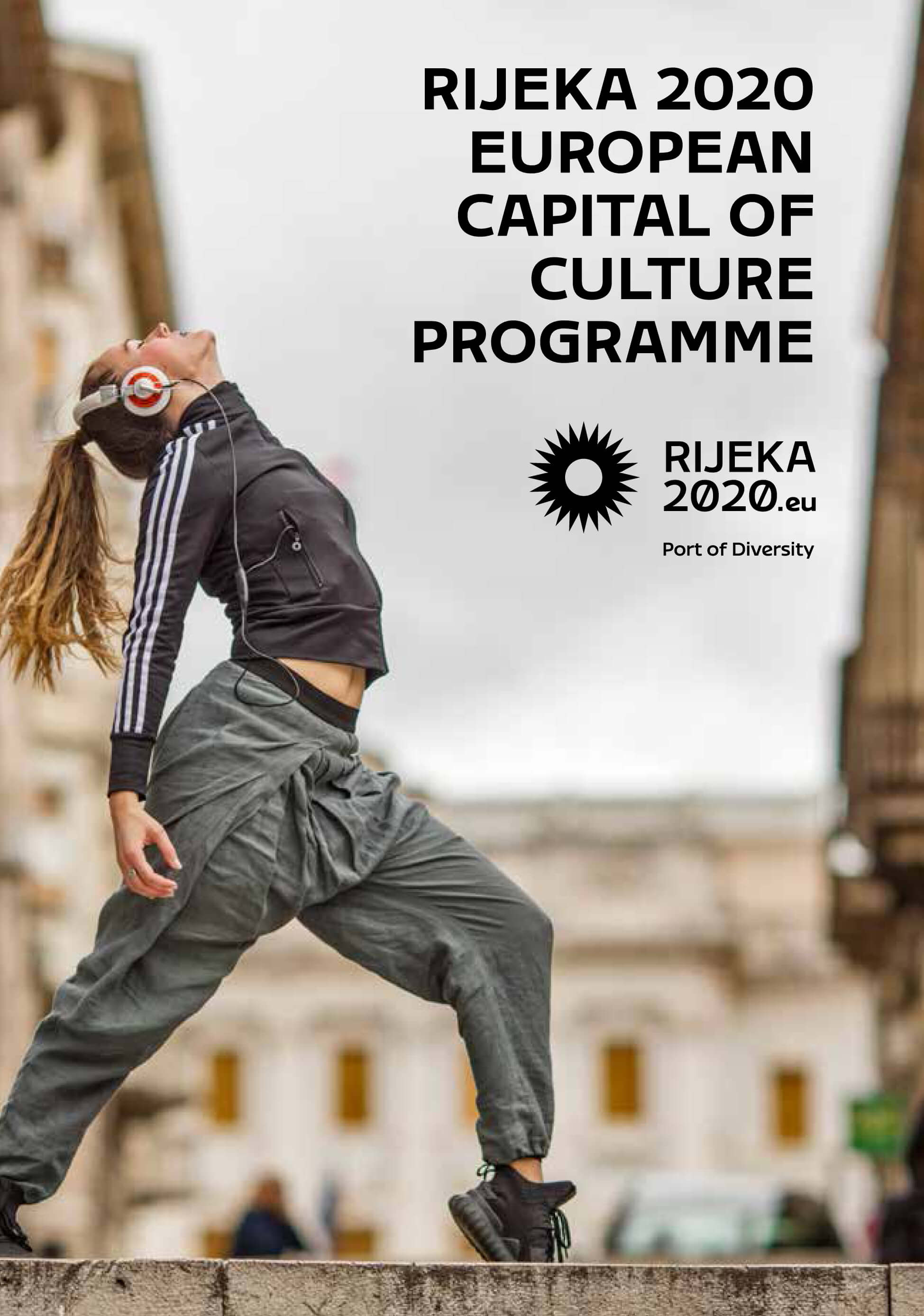
See you in Rijeka in 2020!
Looking to learn more about the 2020 European Capital of Culture? Here are 25 things to know.
Rijeka 2020 Project Wins Melina Mercouri Award
October 18, 2019 - The Melina Mercouri Award, named after the Greek Minister of Culture, who is considered the most responsible for founding the European Capital of Culture project, was won by Rijeka on the recommendation of a European Commission expert panel assessing the seriousness and success of the project.
Namely, HRTurizam writes that in 1985, Melina Mercouri advocated for better mutual knowledge between European citizens, and for them to exchange and discuss culture. Understanding Europe as a place with a shared cultural past as well as future, she argued that the whole of Europe should be united and that culture carries the strongest potential for peace.
It is with these values that the European Capital of Culture project is established, which connects European citizens and brings awareness to the fact that they belong to the European cultural circle.
The decision to grant this project an award, which is worth 1.5 million euro, was made in Galway after a meeting for the "Rijeka 2020 - European Capital of Culture" project.
It is a valuable financial award, which also carries the message of success in the work so far on the development of the "Rijeka 2020 - European Capital of Culture" project. This award for Rijeka means that it fulfilled all the high criteria set by the expert panel and that by seriously managing the project, up to the year of the ECOC title, it accomplished all the tasks that were set before it.
Emina Visnic, director of Rijeka 2020, which was established to implement the European Capital of Culture project, points out that the Melina Mercouri Award is a major and important financial endorsement that the project is successfully managed and developed.
"This award at the symbolic level is confirmation that Rijeka is and that Croatia is in harmony with European cultural values, that we carry and transmit the values of the European cultural circle, that with this project we write new messages for the future and that we truly belong to it as citizens of Europe,” said Visnic.
In addition to the cultural and artistic program for 2020, the topics of the project's legacy, which remain as a lasting value in cultural objects under renovation and construction in Rijeka, but also in the stimulated activities of citizens who are strongly involved in the project, are particularly emphasized in the presentation and talks. But also in several ways, among other things, through a vibrant educational program, highlights the Rijeka 2020 team.
Namely, the European Capital of Culture project aims to influence the incorporation of culture into the long-term development of cities, which is why the topics of the ECOC project's heritage are vital.
To read more about lifestyle in Croatia, follow TCN’s dedicated page.

